Physics 30 Unit C- Electromagnetic Radiation & Quantum Physics
1/128
There's no tags or description
Looks like no tags are added yet.
Name | Mastery | Learn | Test | Matching | Spaced |
|---|
No study sessions yet.
129 Terms
electromagnetic radiation (EMR)
radiant energy in the form of a wave. it is produced by the acceleration of electrons or other charged particles
EMR examples
heat waves, radiant waves, UV rays, X rays etc.
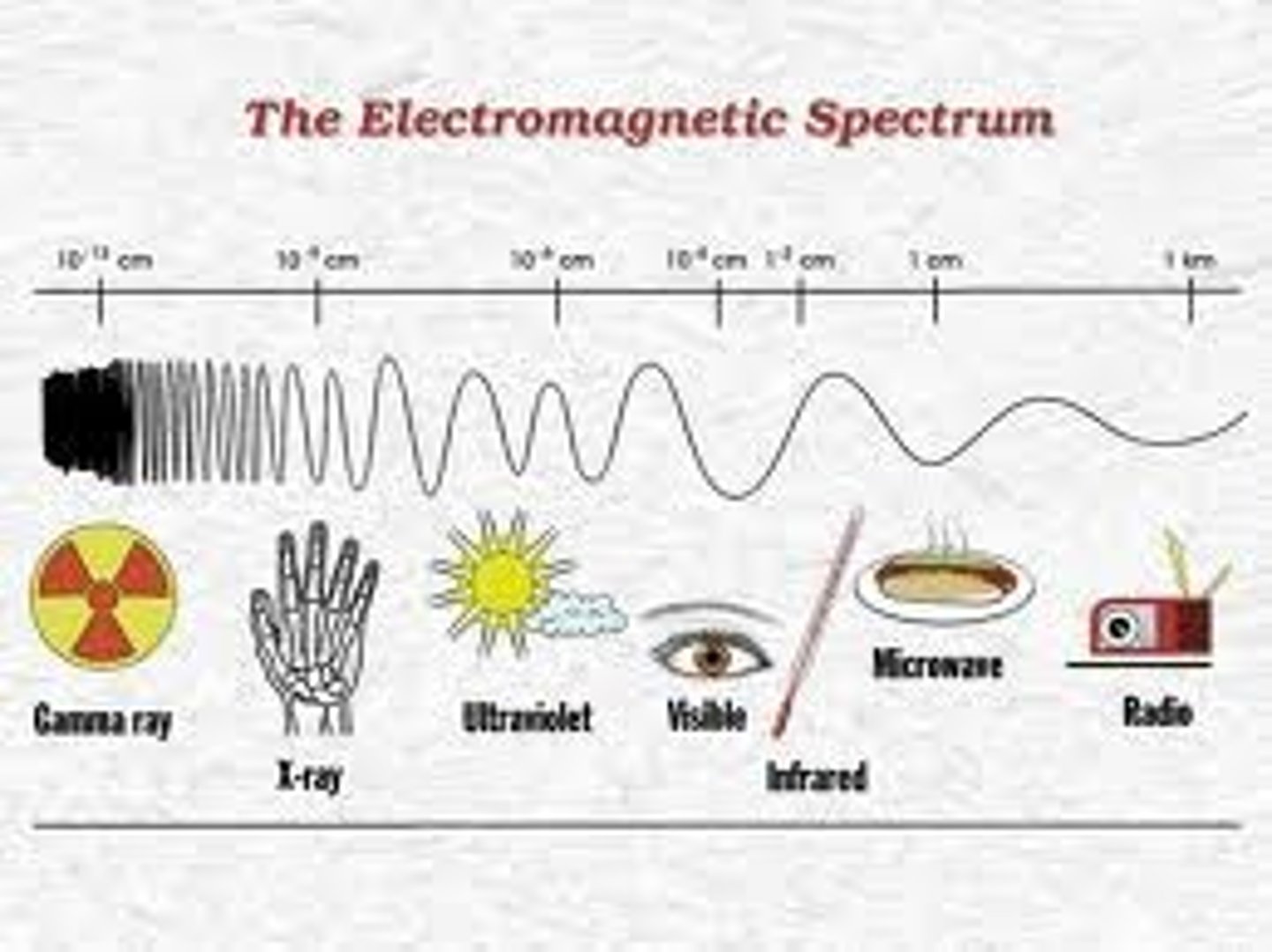
How is EMR spectrum organized
by frequency and wavelength- they are inversely related, so as frequency increases along the spectrum, wavelength decreases
Wavelength
The distance between two corresponding parts of a wave
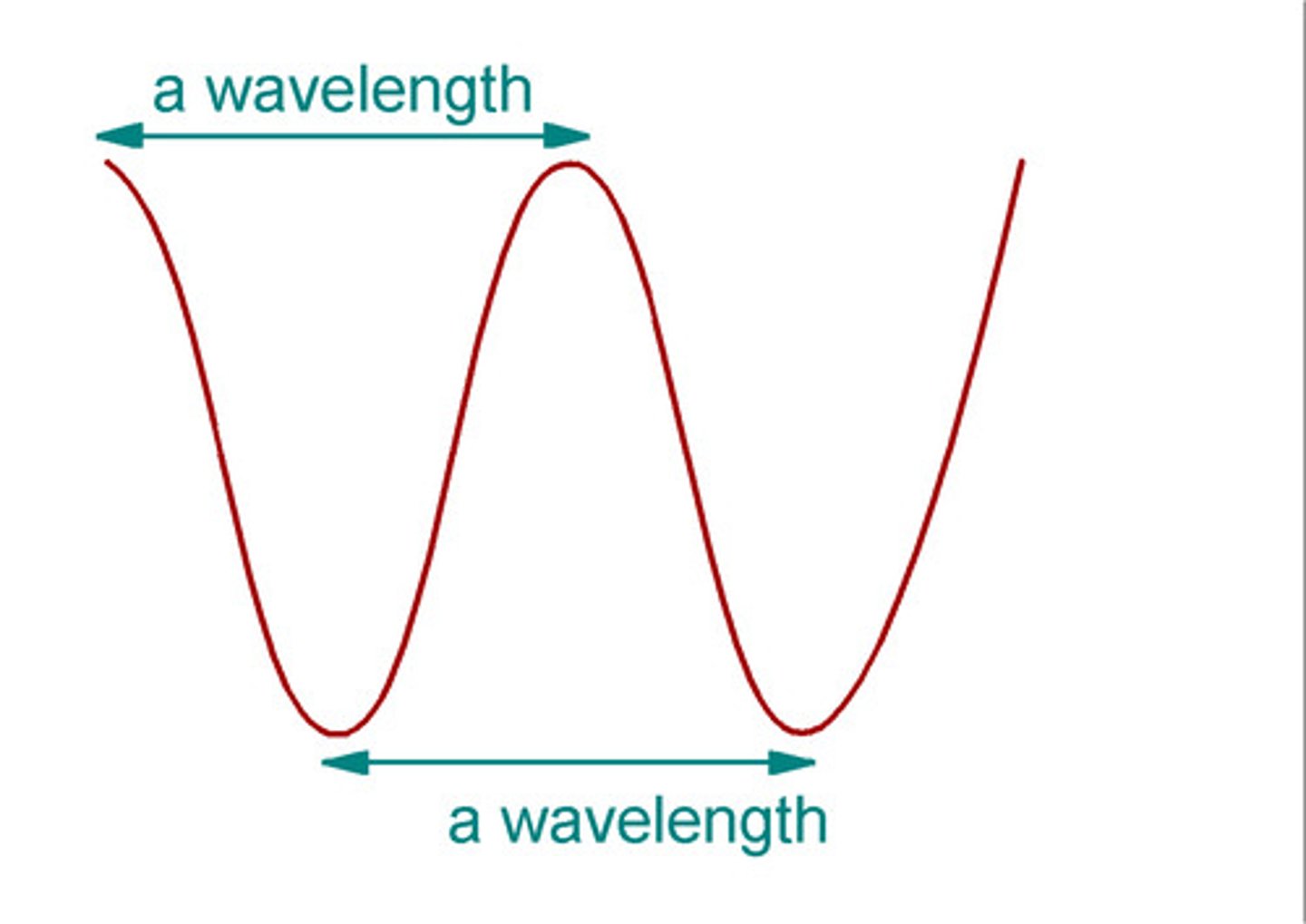
source
where waves originate from
medium
Material through which a wave travels
propagation
how waves move through space
frequency
number of cycles per unit of time
universal wave equation
v=f(lambda)
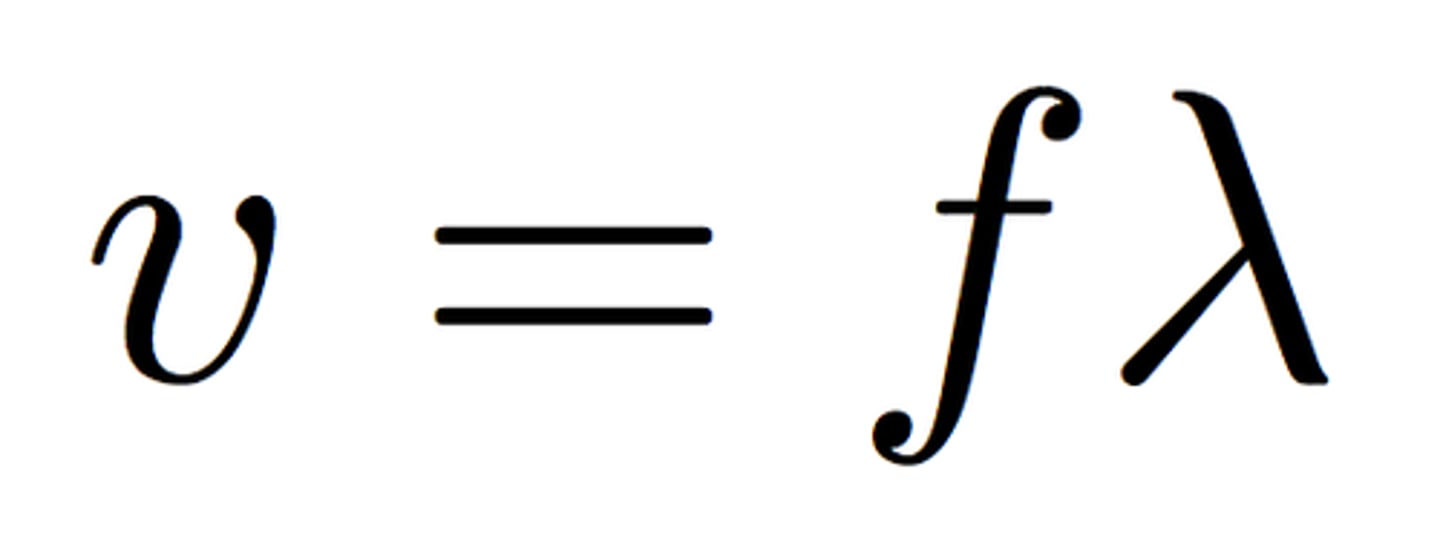
Particle Model of EMR
EMR is a stream of tiny particles radiating outward from source (Newton believed this- it explains some of the properties of light, such as how metal absorbs light)
Particle Wave Model of EMR
Light is a stream of transverse waves radiating from a source
Young's Doubles Slit Experiment
light passed through two slits and created wave pattern (diffraction occured). this supported the wave theory of light
Particle theory and wave theory united
Einstein/Planck/Maxwell united the particle theory and wave theory. they discovered that light behaved sometimes like a wave and sometimes like a particle. this lead to the development of quantum mechanics
photons
(i.e what light is!) discrete unit of energy associated with electromagnetic fields. they have both and wave-like and particle-like properties
quantum model of light
Einstein's theory that light is emitted in mass less particles (photons). this united the particle and wave theory
what does a stationary charge produce?
gravitational field
what does a charge moving with uniform motion produce?
gravitational, electric, magnetic fields
what does an accelerating charge produce?
gravitational field and changing electric/magnetic fields
Maxwell's Theory
A changing electrical field produces a changing magnetic field
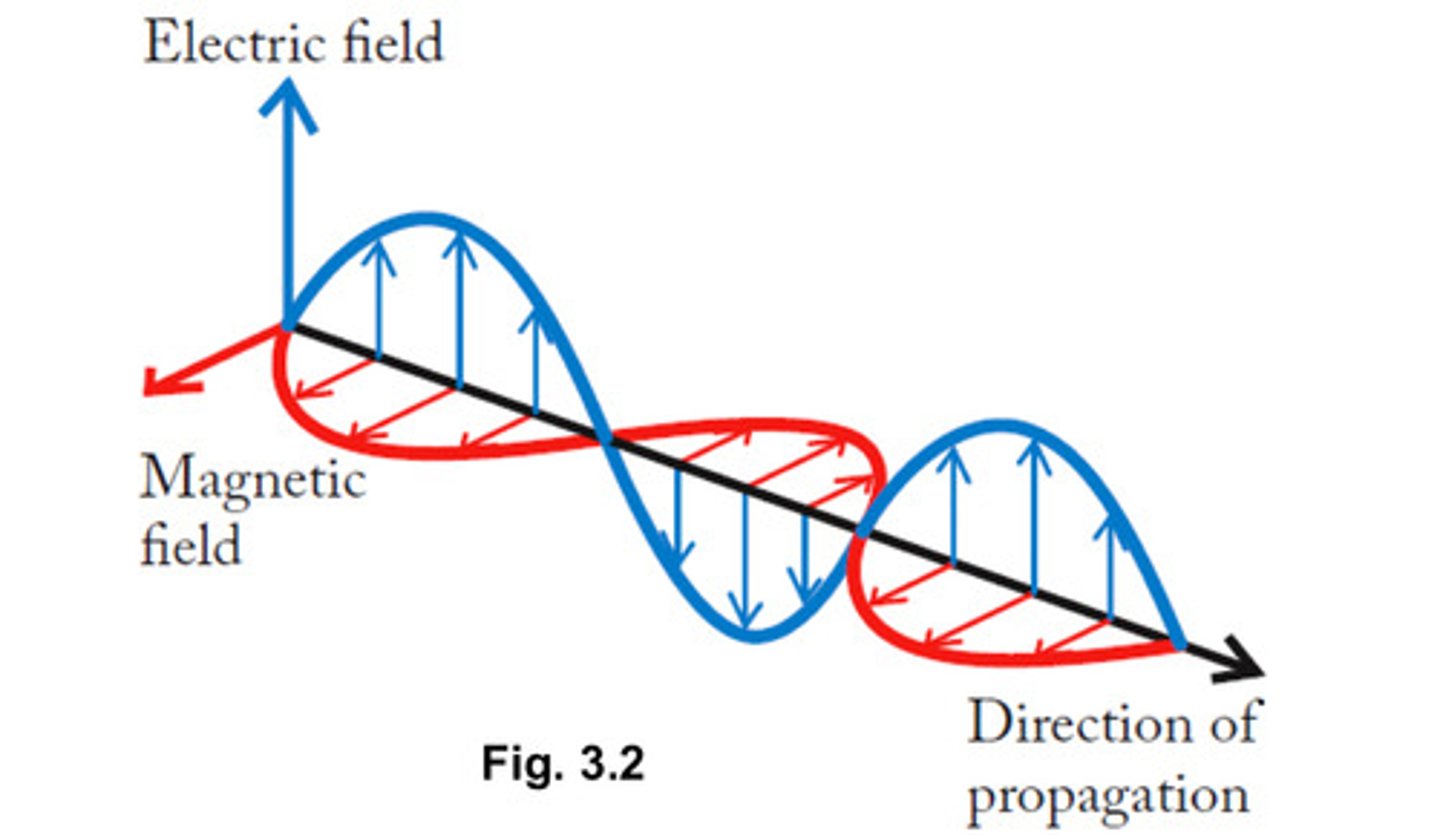
the energy and direction of the changing magnetic fields and changing electric fields in EMR are _______ to each other.
perpendicular (e.g if electric field is moving east/west, magnetic field will be moving up and down)
visible light according to energy
violet (most energy), indigo, blue, green, yellow, orange, red (least energy)
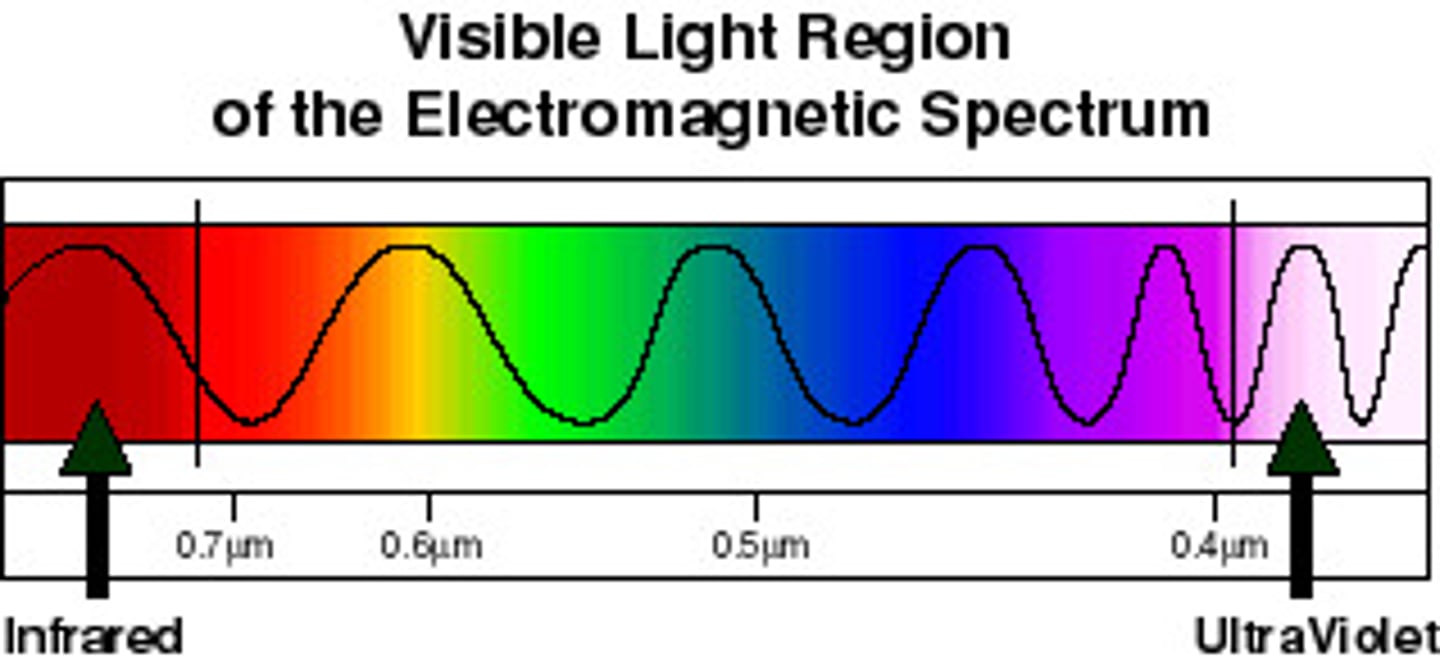
EMR from most harmful to least harmful
(higher frequency = more dangerous) gamma rays, x rays, uv -> radar, microwaves
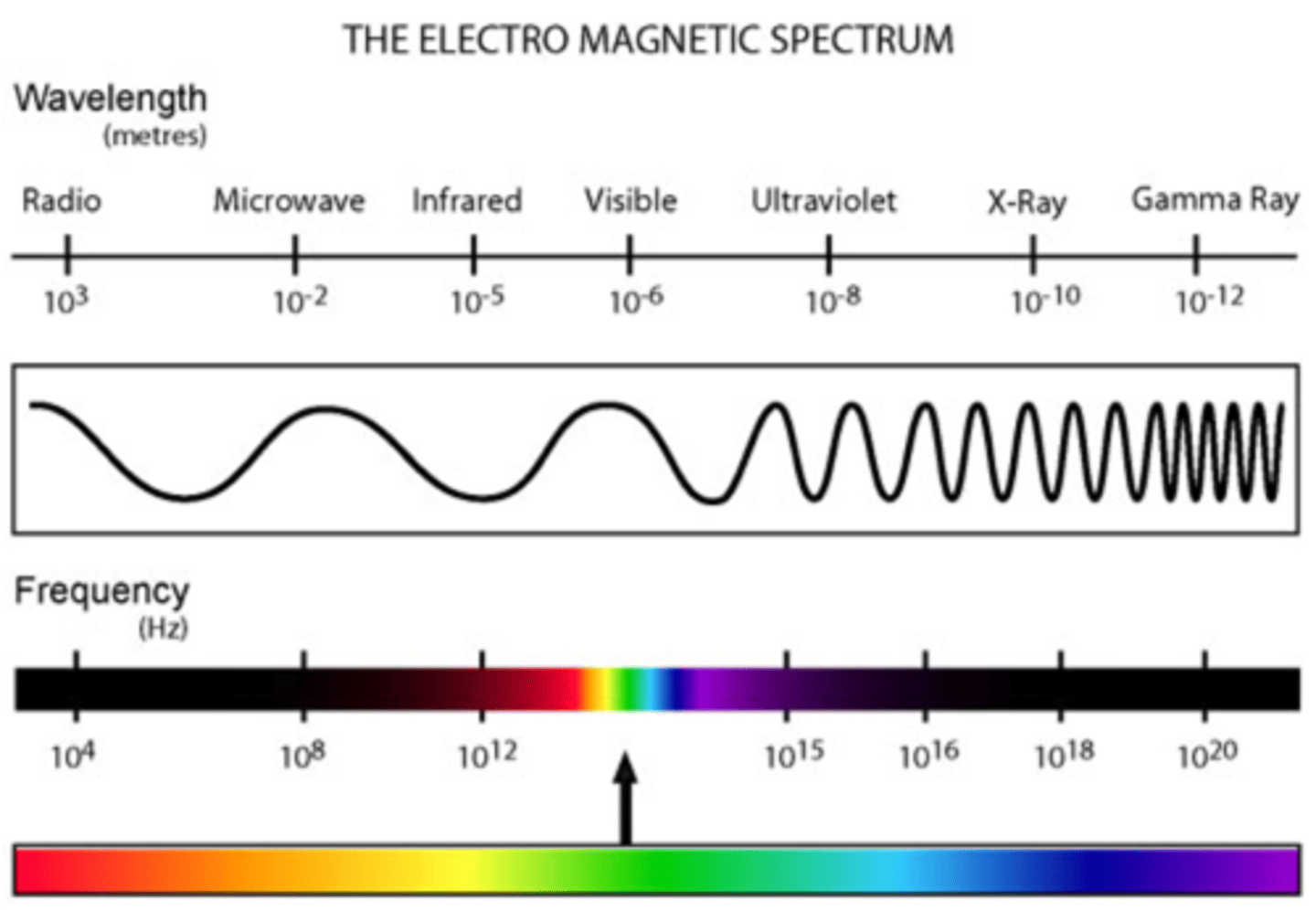
determining the speed of light (early attempts)
galileo stood 1km away from assitant and timed how long it took to see a lantern (this was too fast!). Olaus and Christian used jupiter's moons and their periods to calculate how long it took light to travel from jupiter to earth (he was pretty close!)
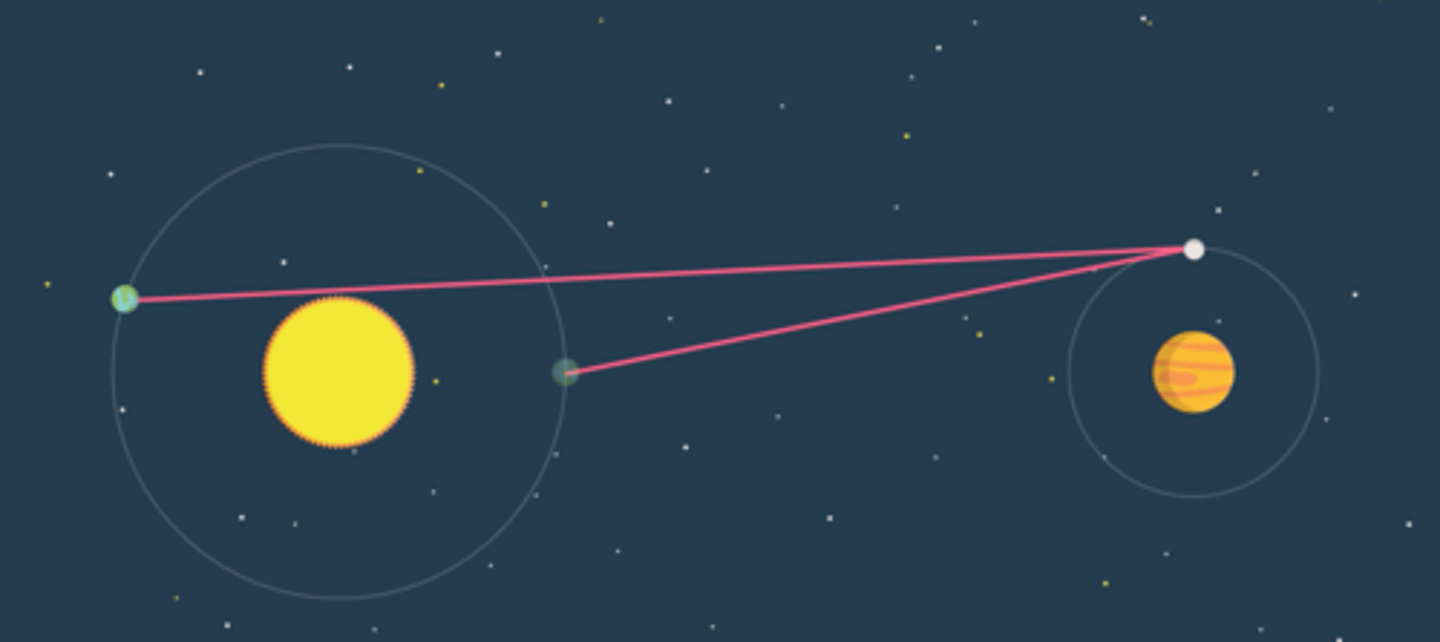
Fizeau's experiment
-consisted of a rotating toothed wheel, a light source, some lenses and a mirror
-light passed through the hap in toothed wheel and traveled toward the mirror (8.63 km away)
-the height was reflected back to the toothed wheel and blocked by a tooth
-using rotational frequency, fizeau determined the time to go there and back
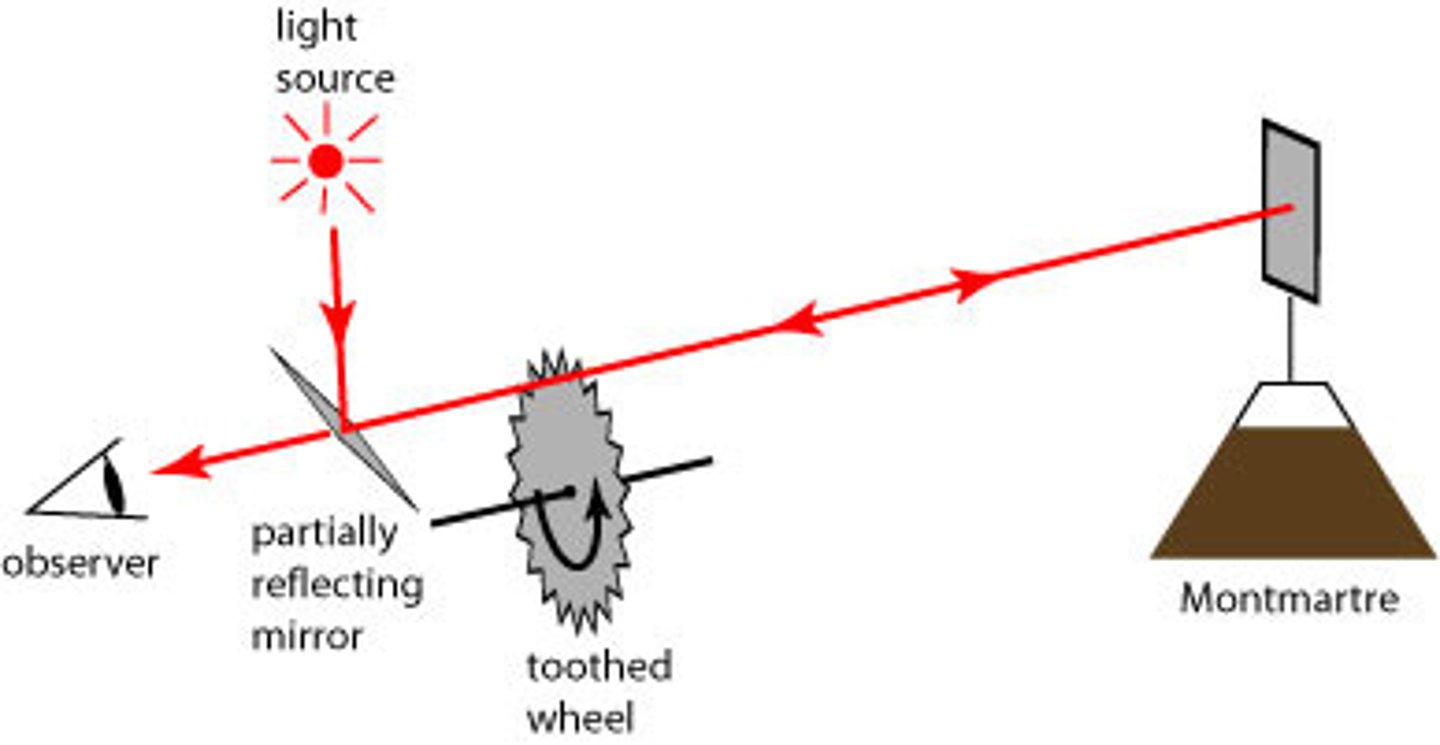
Michelson's experiment
Timed a light beam as it traveled from one mountain to another and back again. His measure experimented the speed of light more accurately than ever before
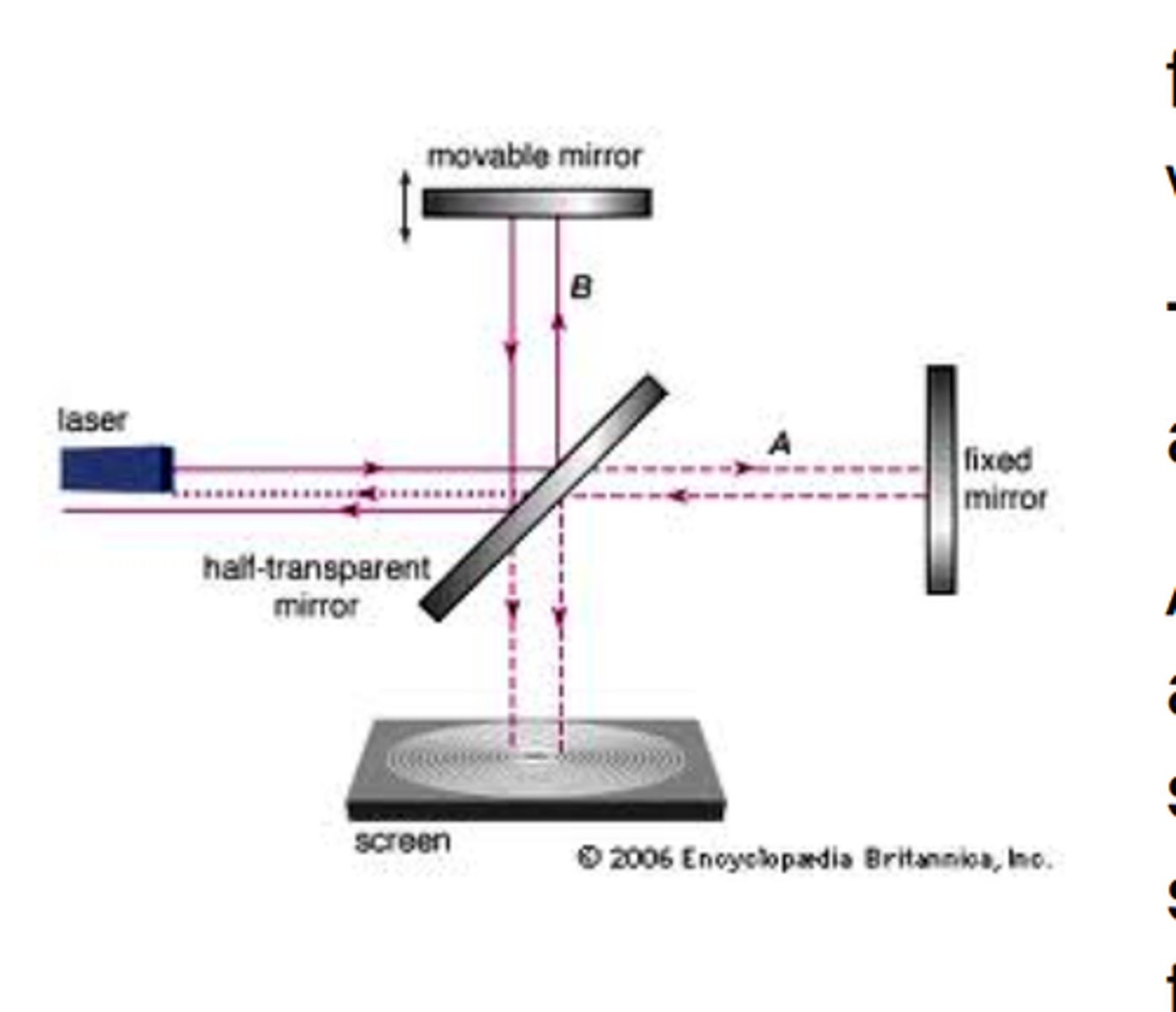
ray diagram
a diagram to show a result of a light ray interacting with a surface
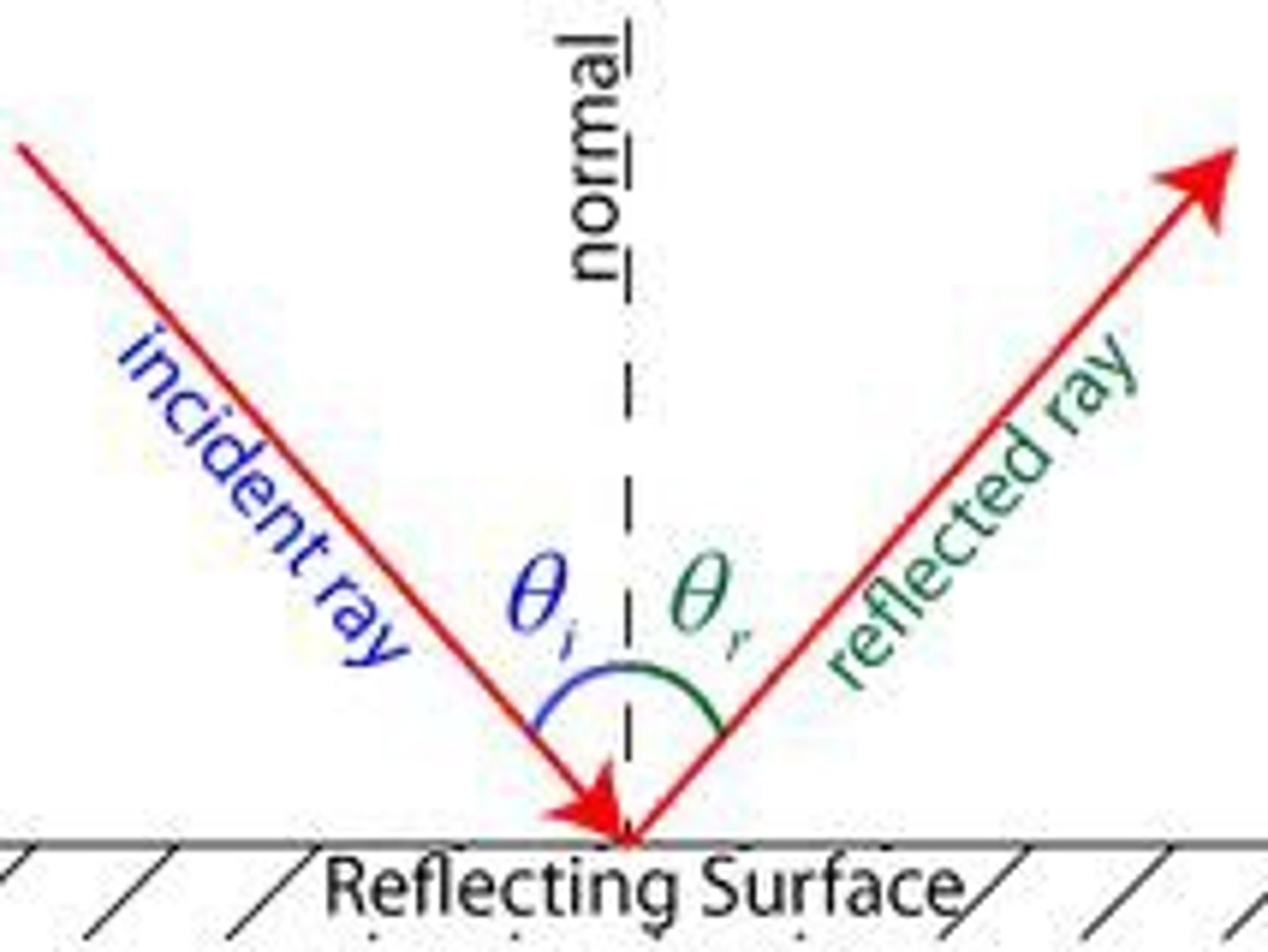
incident ray
a ray of light going toward a surface
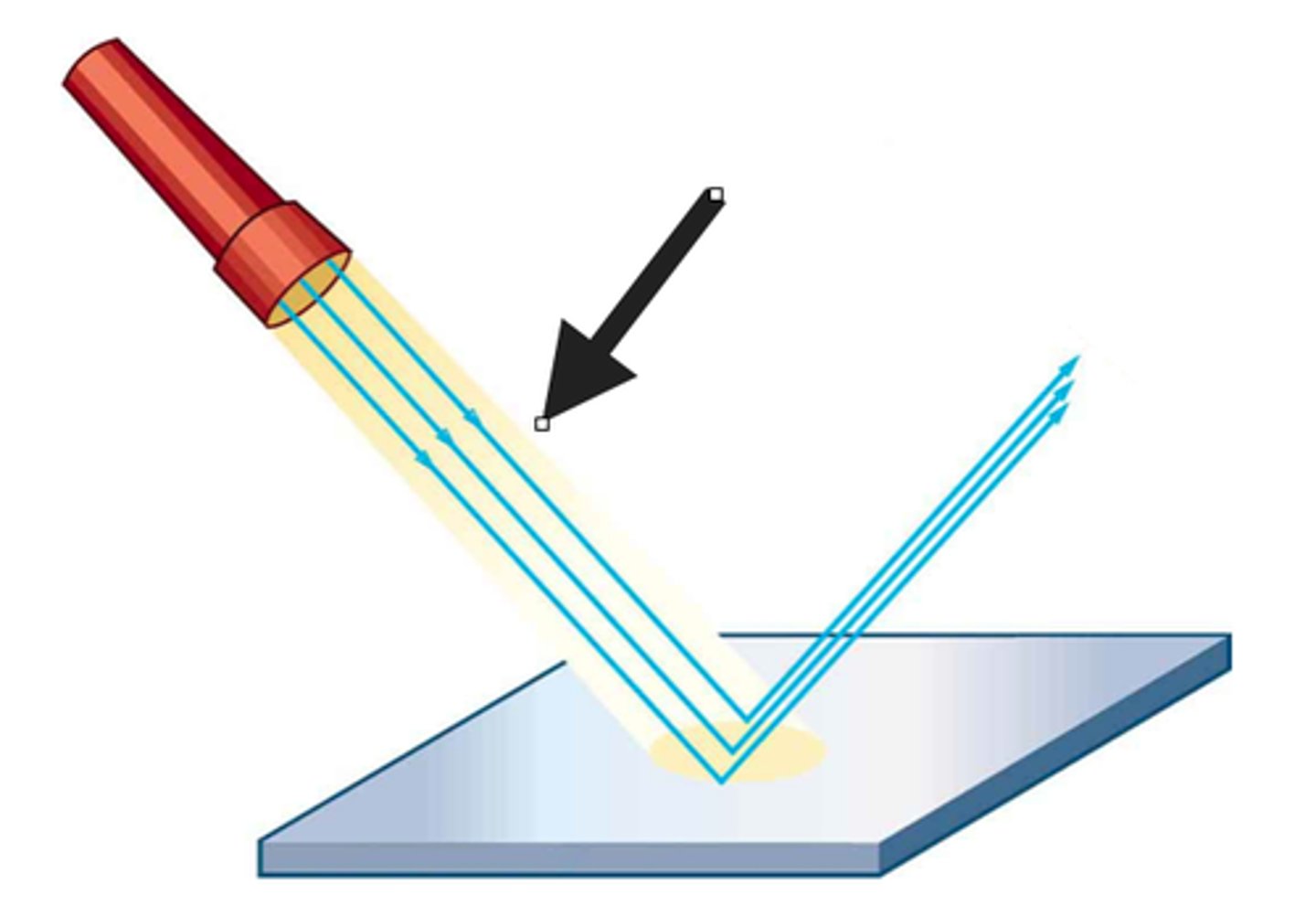
point of incidence
the spot where the incident ray strikes the reflecting surface
reflected ray
the light ray that bounces off a surface
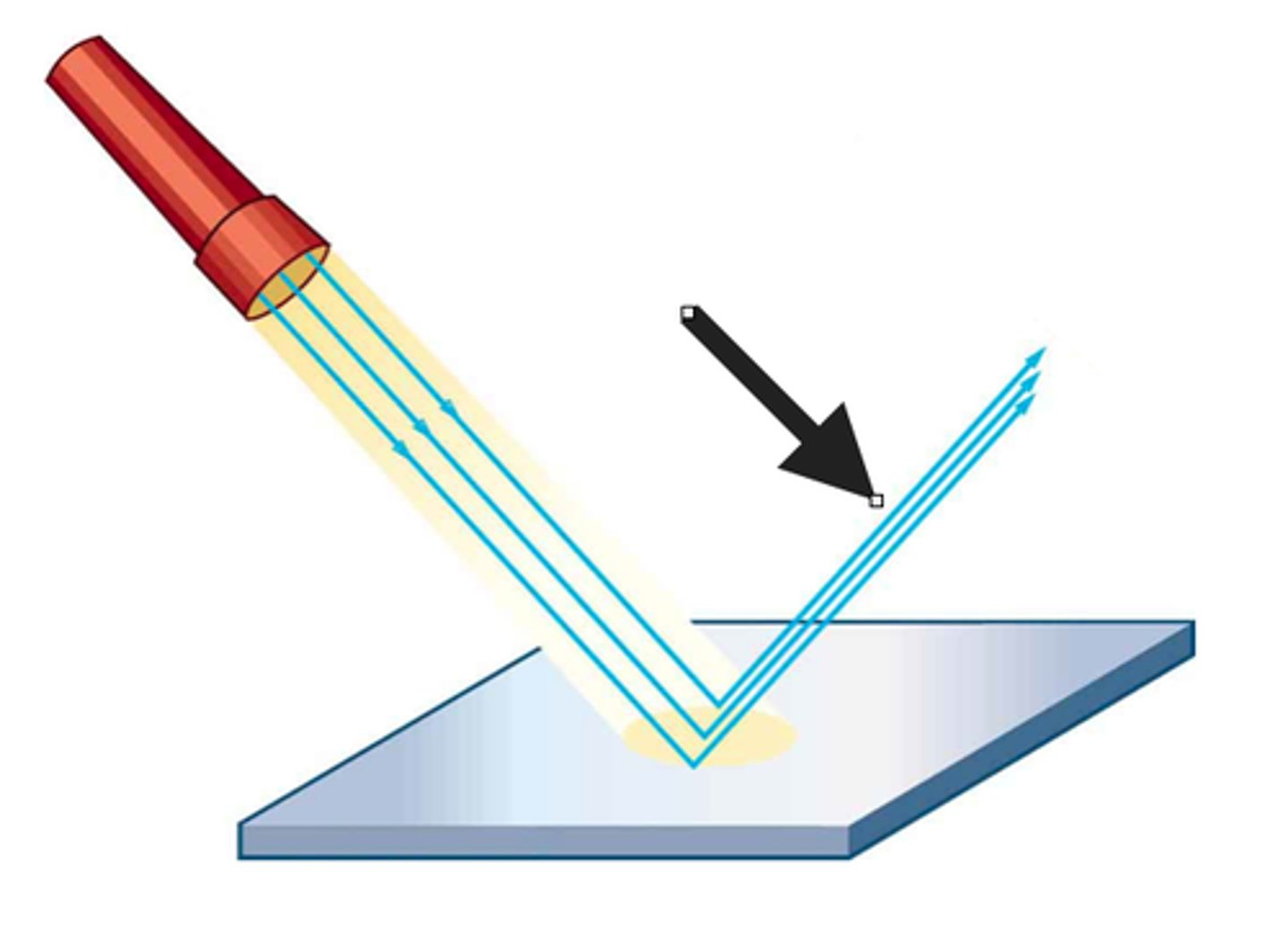
normal line
divides the angle between the incident ray and the reflected ray into two equal angles
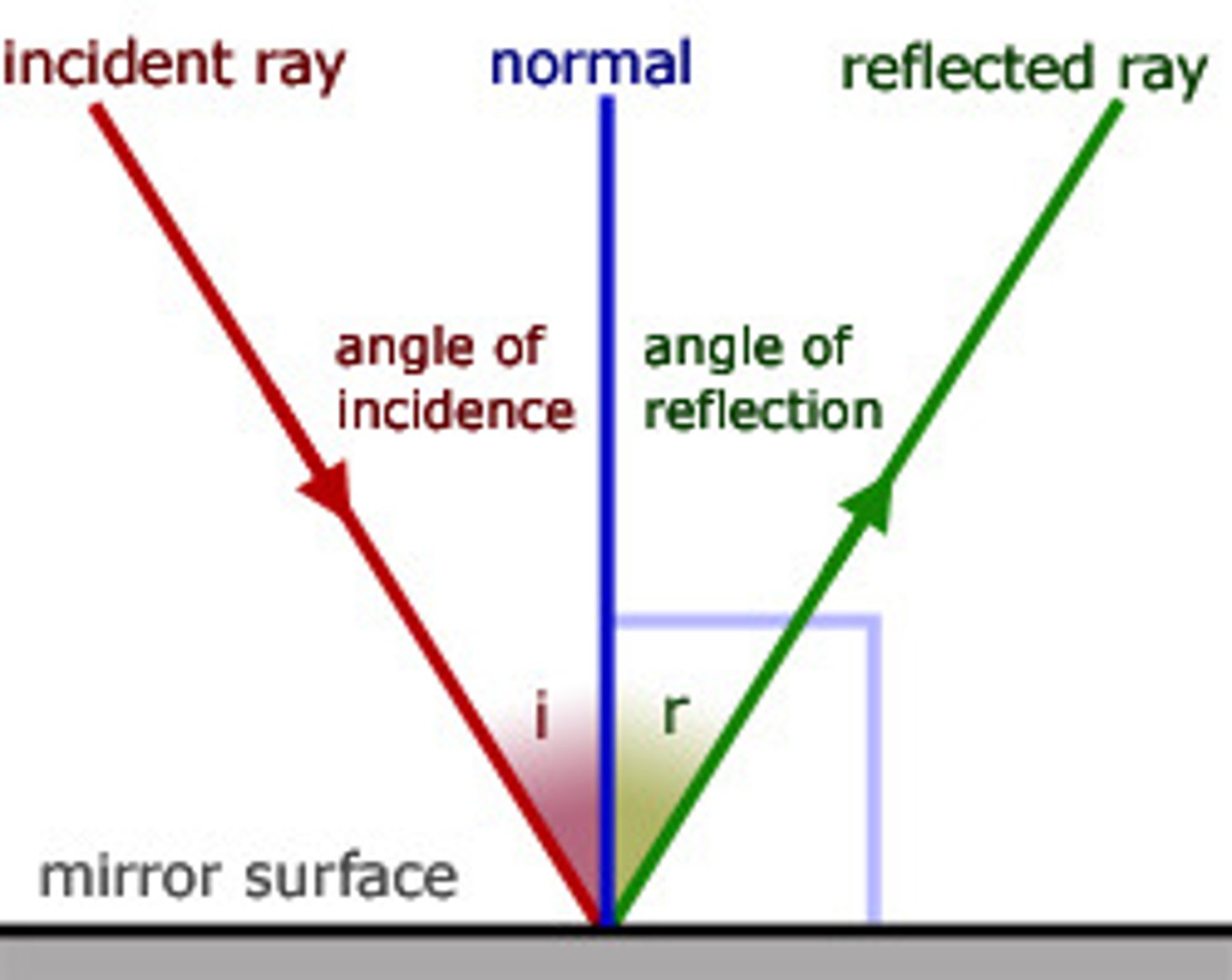
angle of incidence
the angle between the incident ray and the normal
angle of reflection
The angle between the reflected ray and the normal
law of reflection
the angle of incidence is equal to the angle of reflection
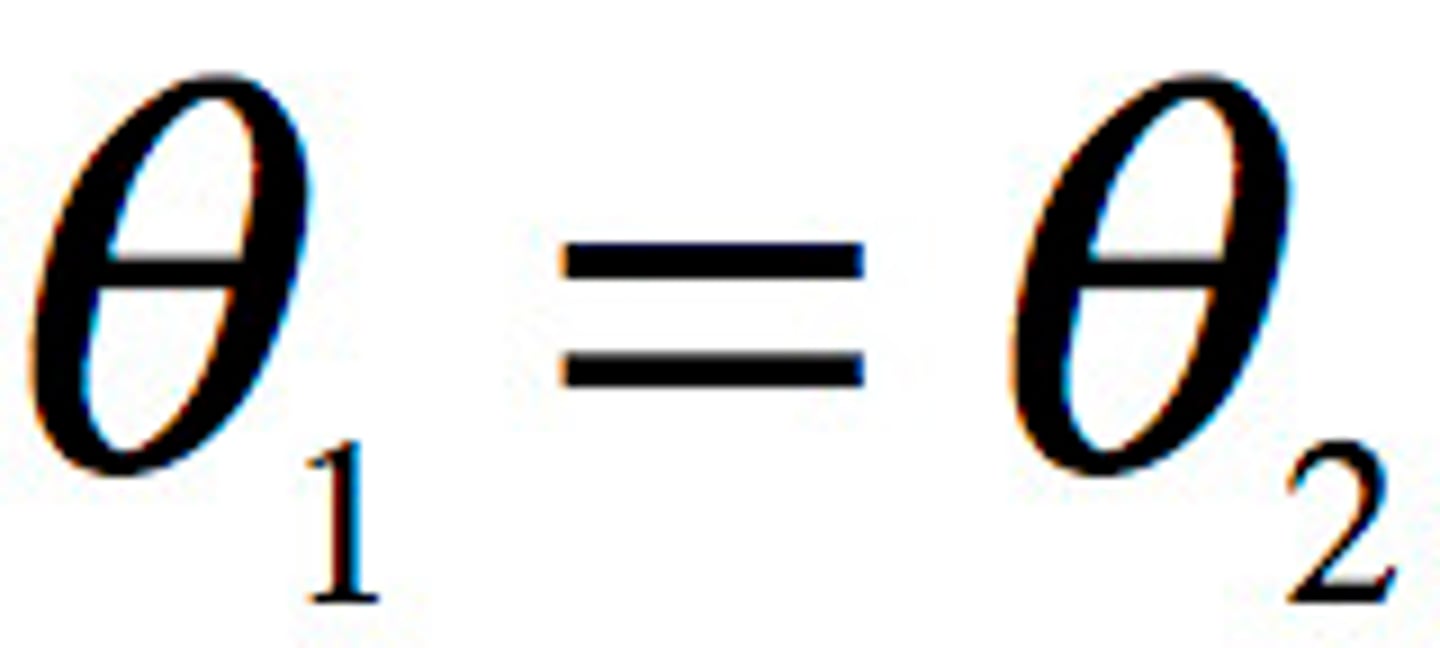
specular reflection
Reflection of light off a smooth surface
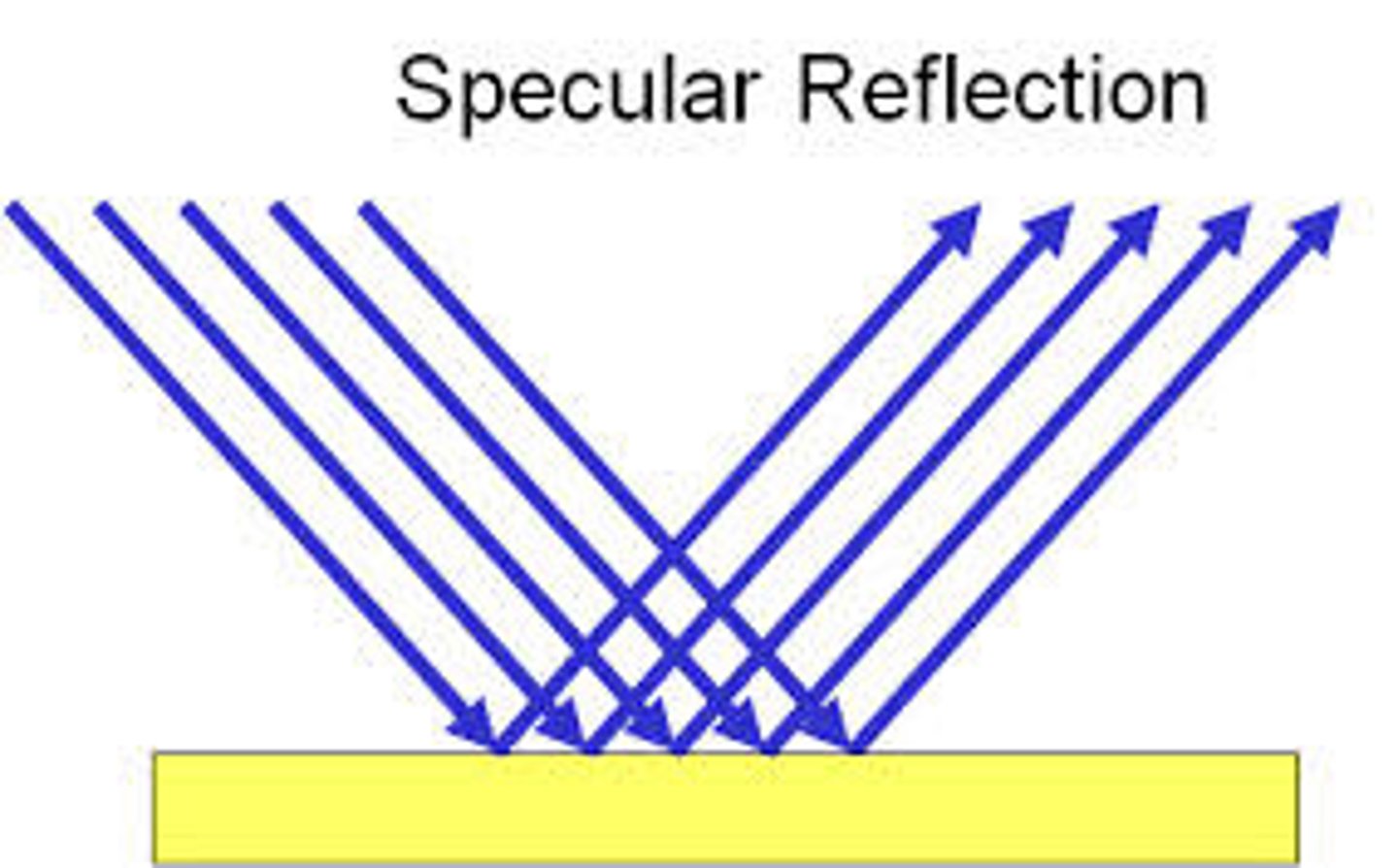
diffuse reflection
reflection of light from a rough surface
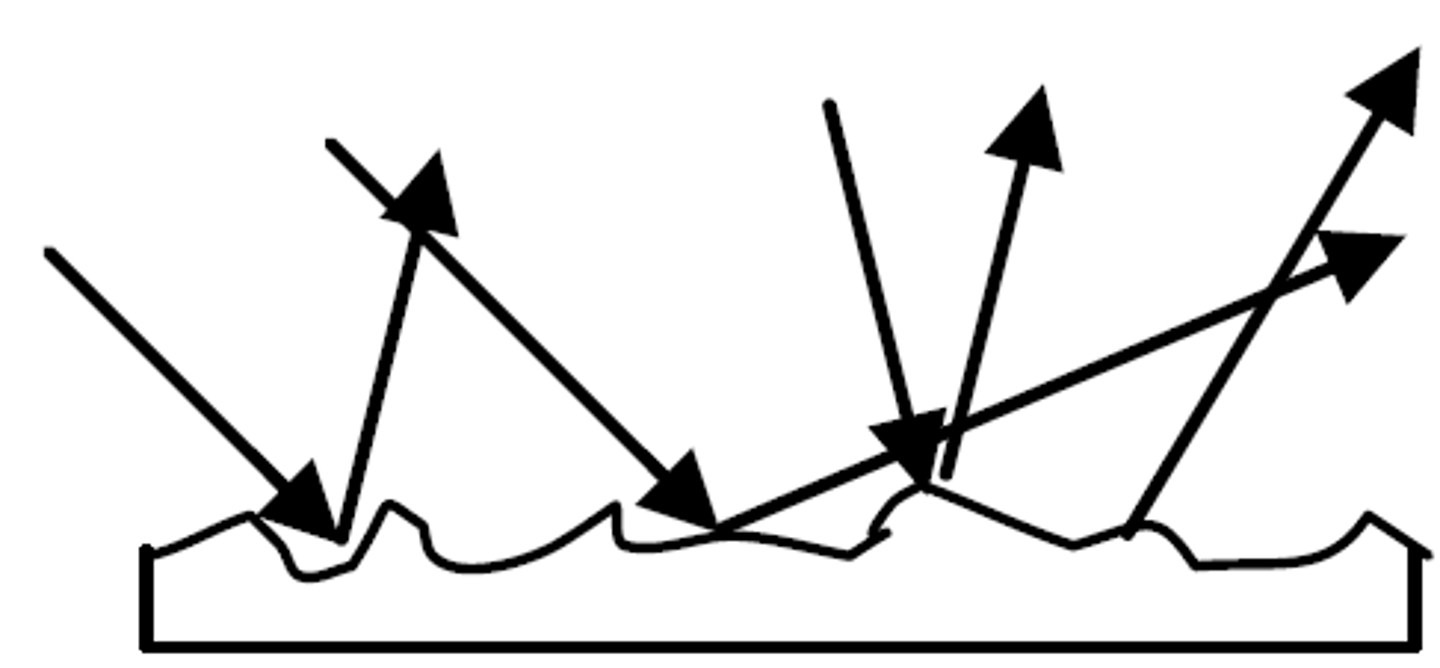
curved mirror vertex (v)
the geometric centre of the curved mirror surface
concave mirror
converging mirror
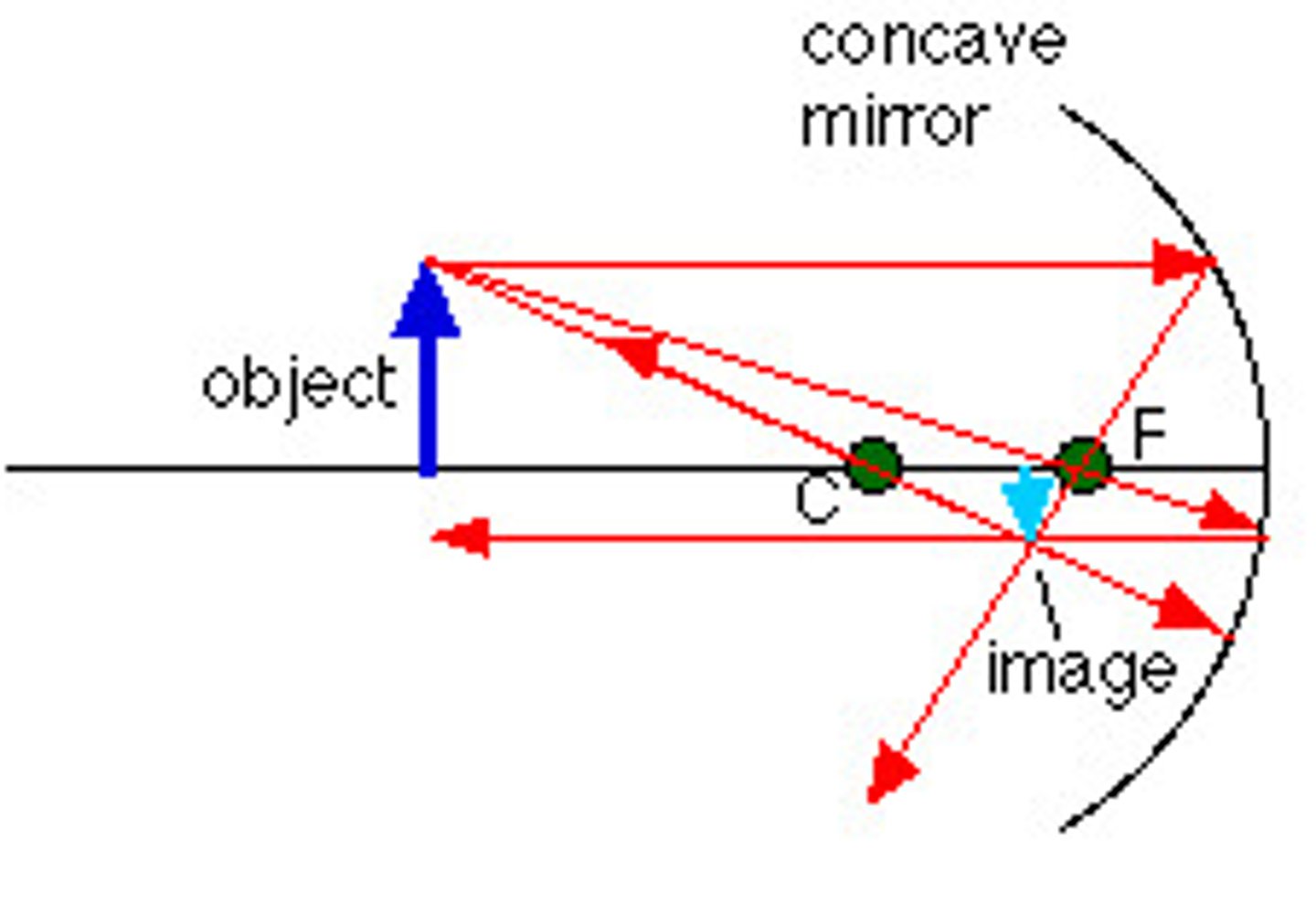
convex mirror
diverging mirror
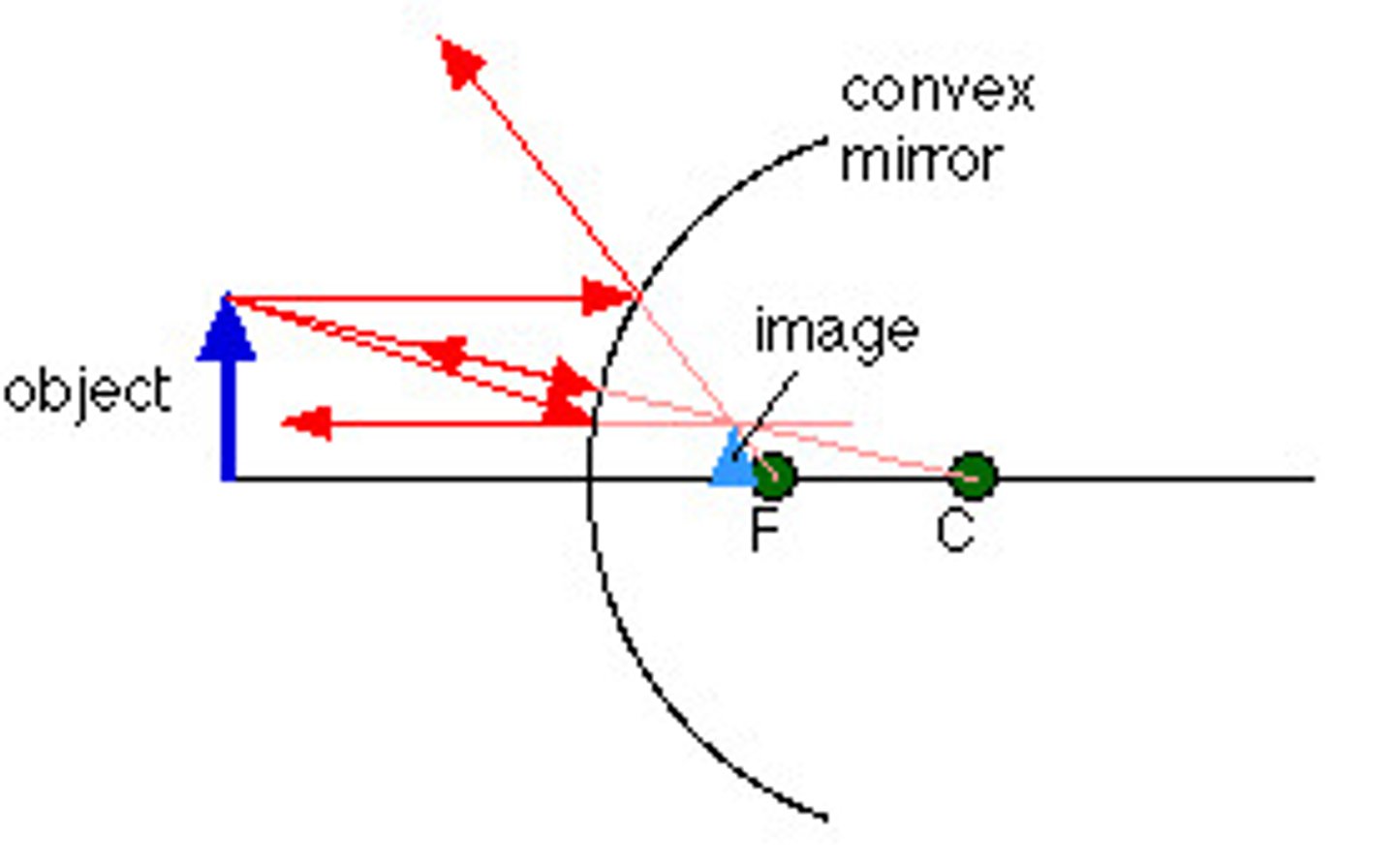
the centre of curvature (c)
the point in space that would represent the centre of the sphere from which the curved mirror was cut
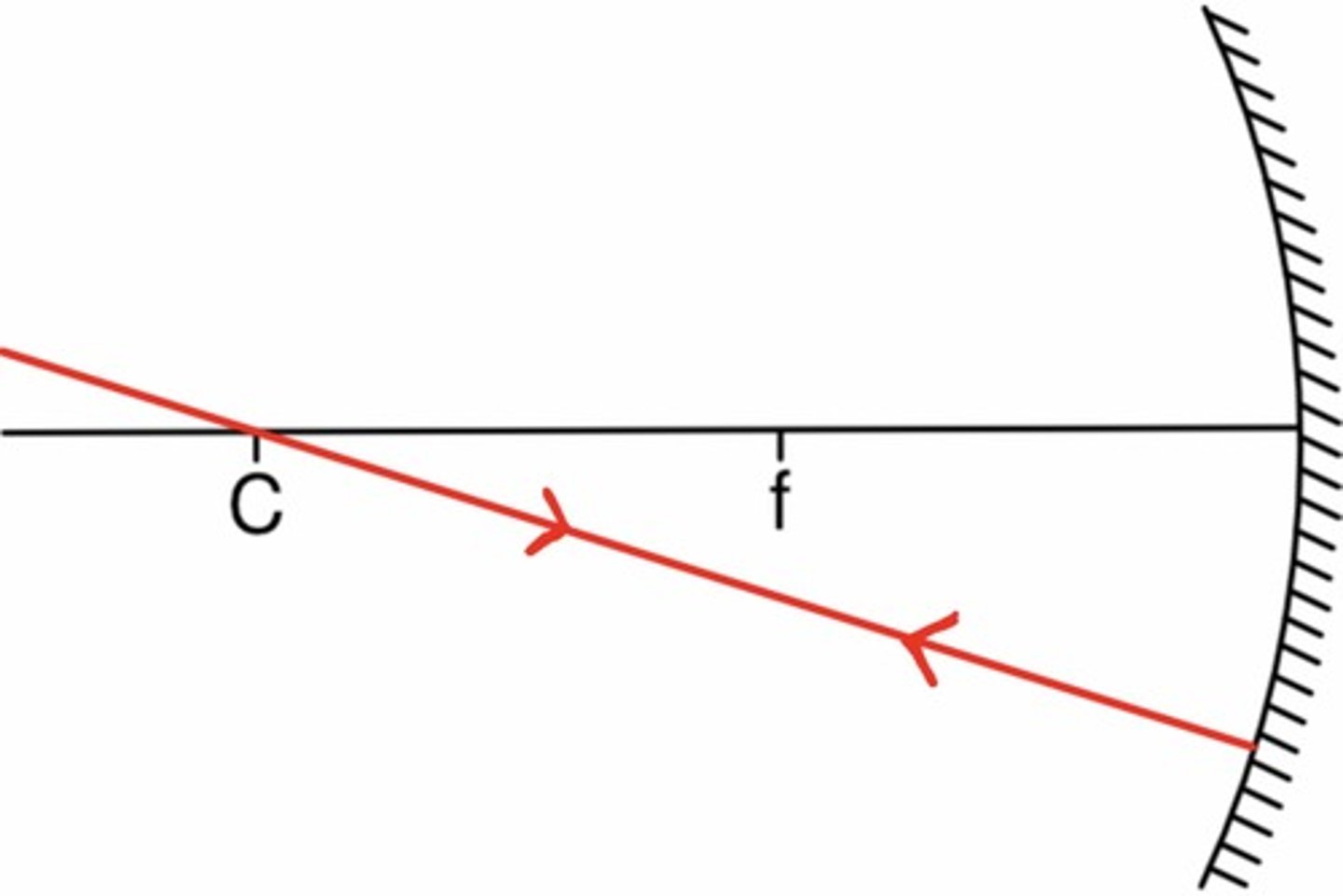
the principal axis
an imaginary line drawn through the vertex perpendicular to the surface of the curved mirror
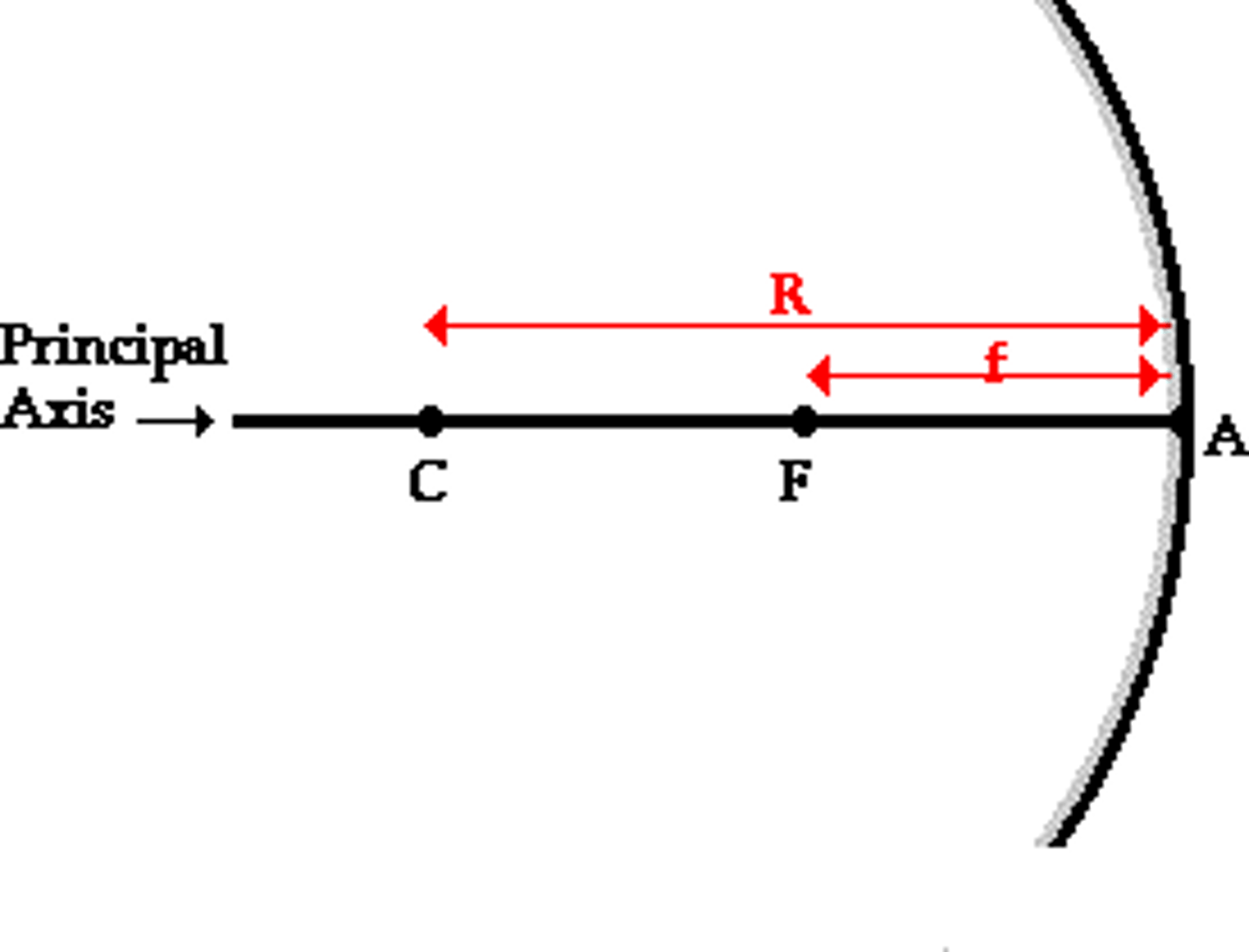
focal point (F)
point where light rays meet or appear to meet
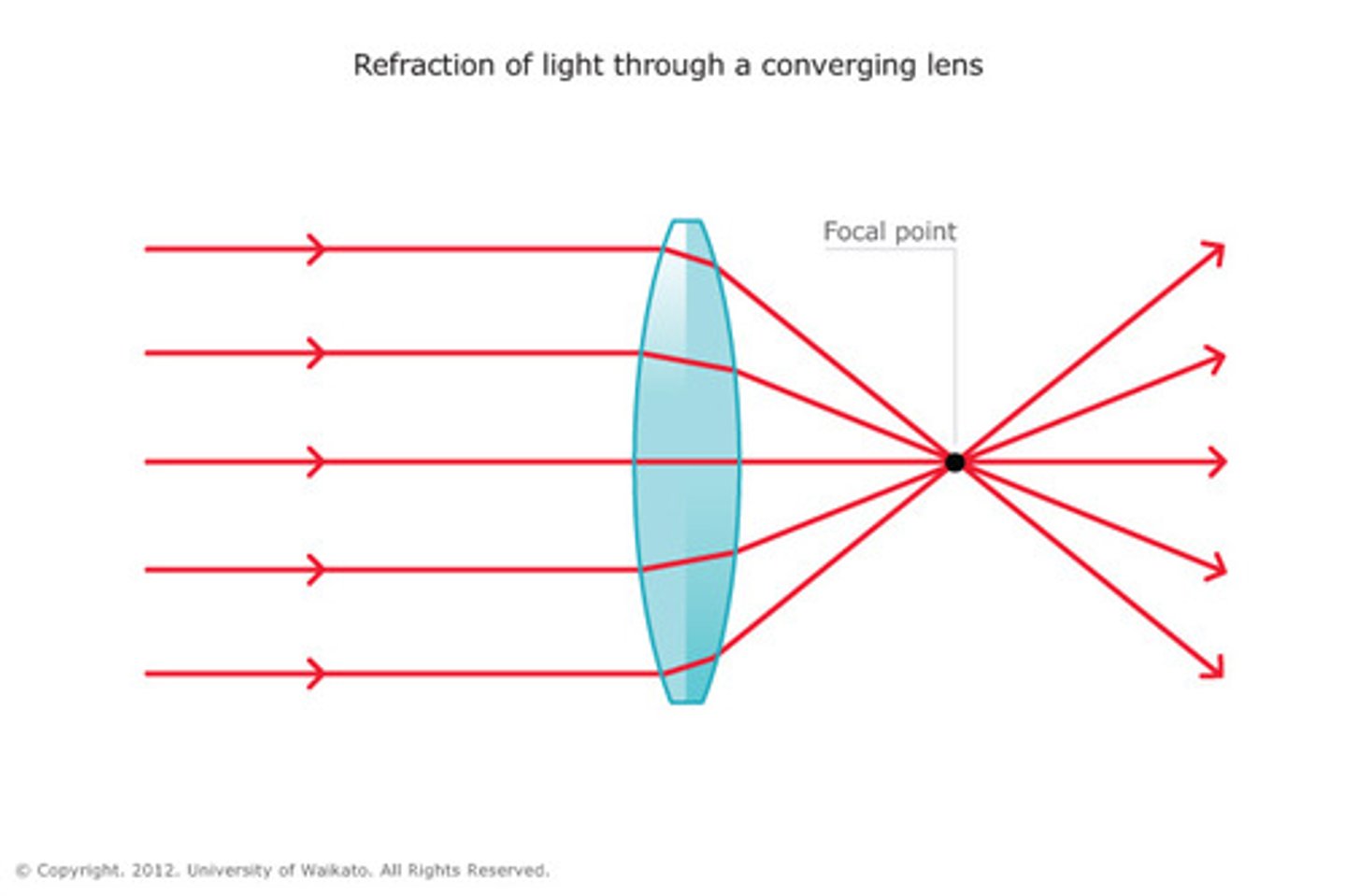
the focal distance (f)
distance from vertex to focal point
real image
a copy of an object formed at the point where light rays actually meet (positive f)
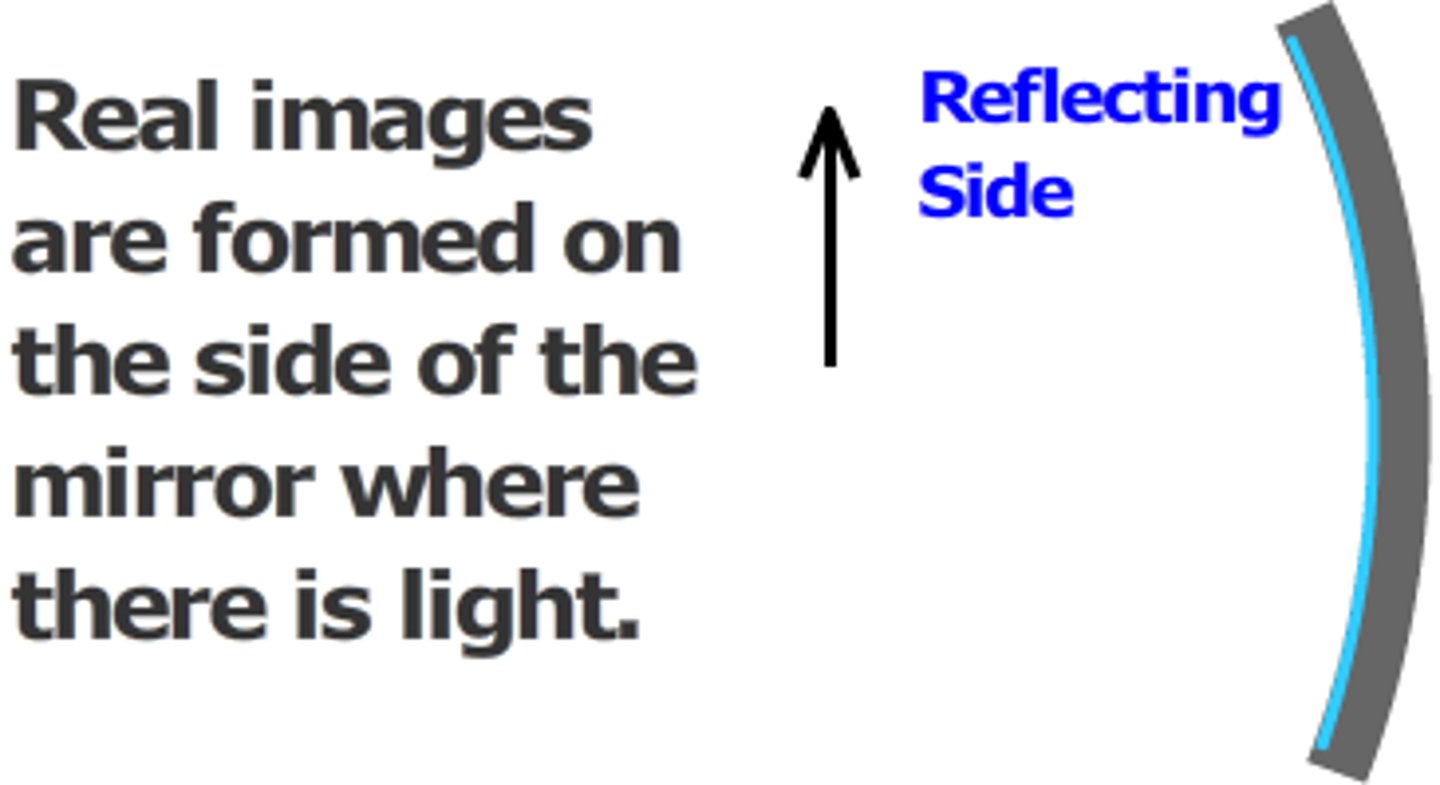
virtual image
a reflected optical image (negative f)
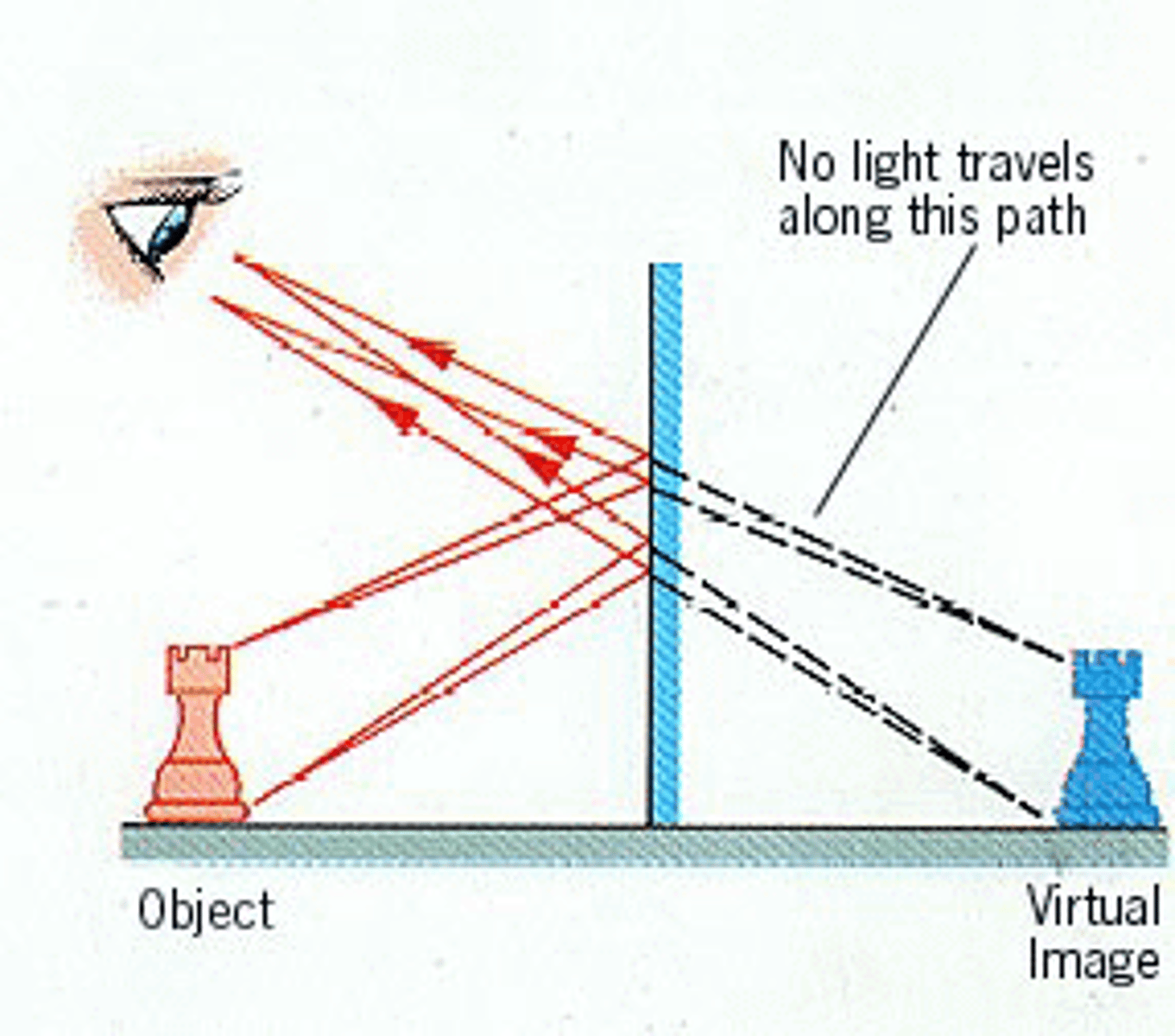
ray diagram concave mirror
(see image)

ray diagram convex mirror
(see image)
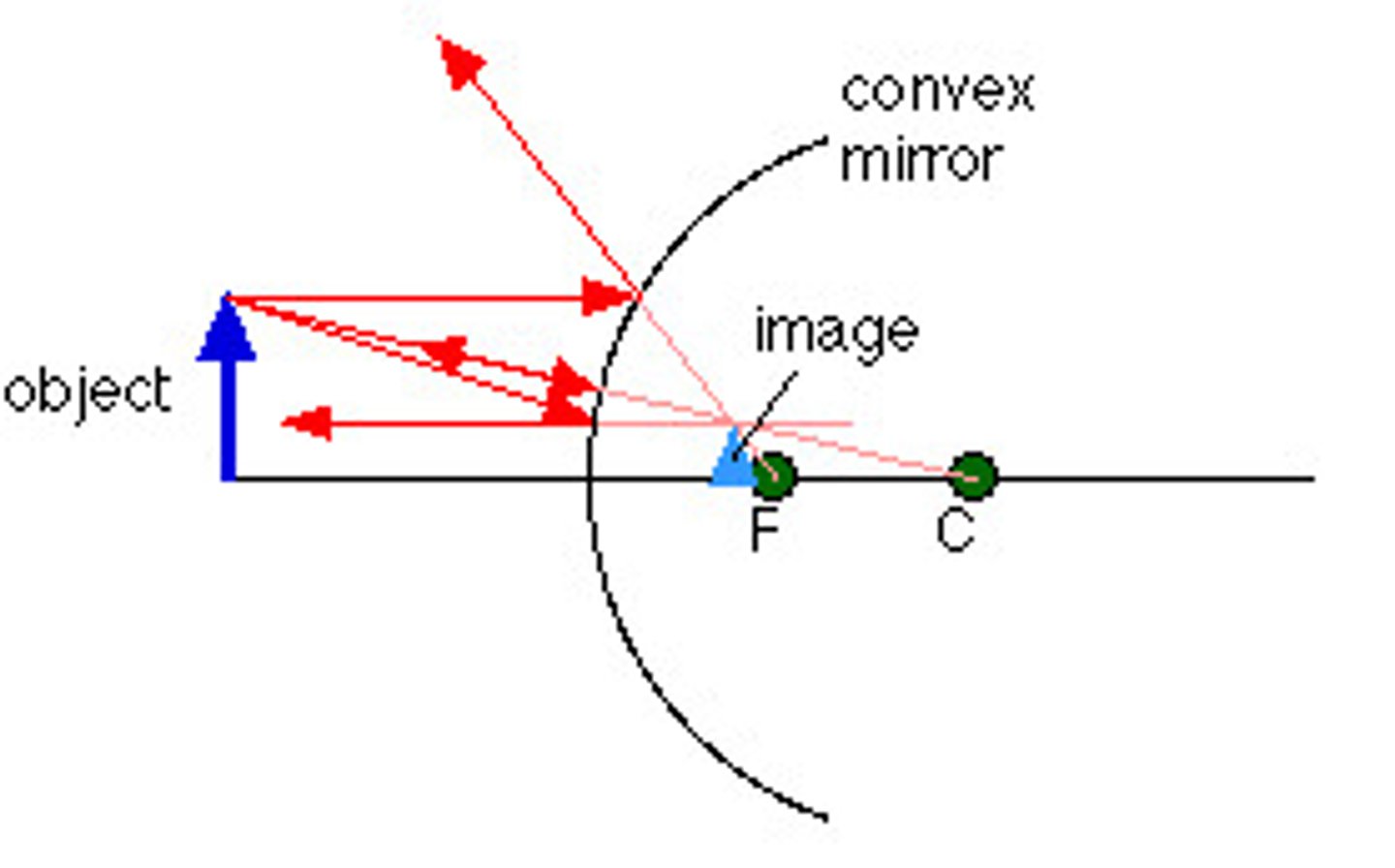
if the electric part of EMR oscillates west/east, the magnetic part oscillates
up down (perpendicular)
converging
concave mirror and convex lens
diverging
convex mirror and concave lens
image characteristics of a concave mirror-object before C
smaller, inverted, real
image characteristics of a converging mirror- object on C
same size, inverted, real
image characteristics of a converging mirror- object between C and F
larger, inverted, real
image characteristics of a converging mirror- object on F
no image
image characteristics of a converging mirror- object between F and V
larger, upright, virtual
Image characteristics of a CONVEX mirror (diverging)
virtual, diminished, erect (no matter location of object)
Image characteristics of a diverging lens
smaller, upright, virtual
lens diagram converging
convex (image is usually real)

lens diagram diverging
concave (image is virtual)
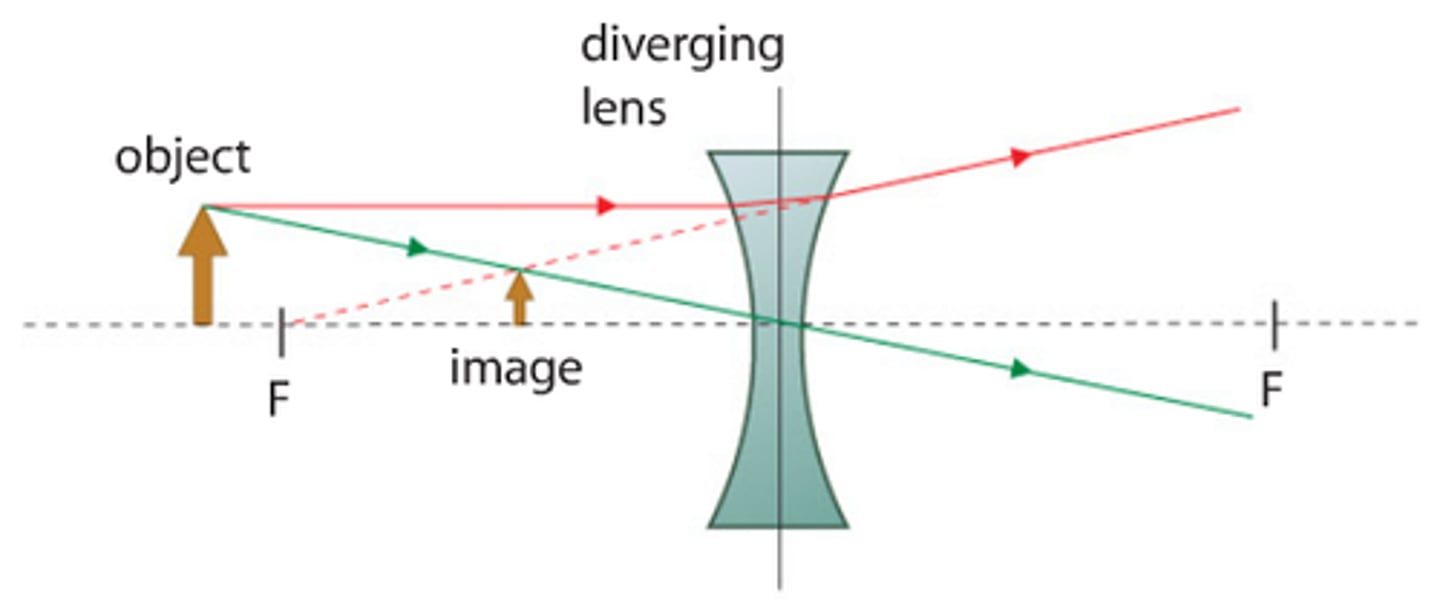
why do your legs look bent when you are standing in water?
light bends as it enters water
Refraction
a change in the direction of light as it passes from one medium to another. the denser medium "weighs" on light
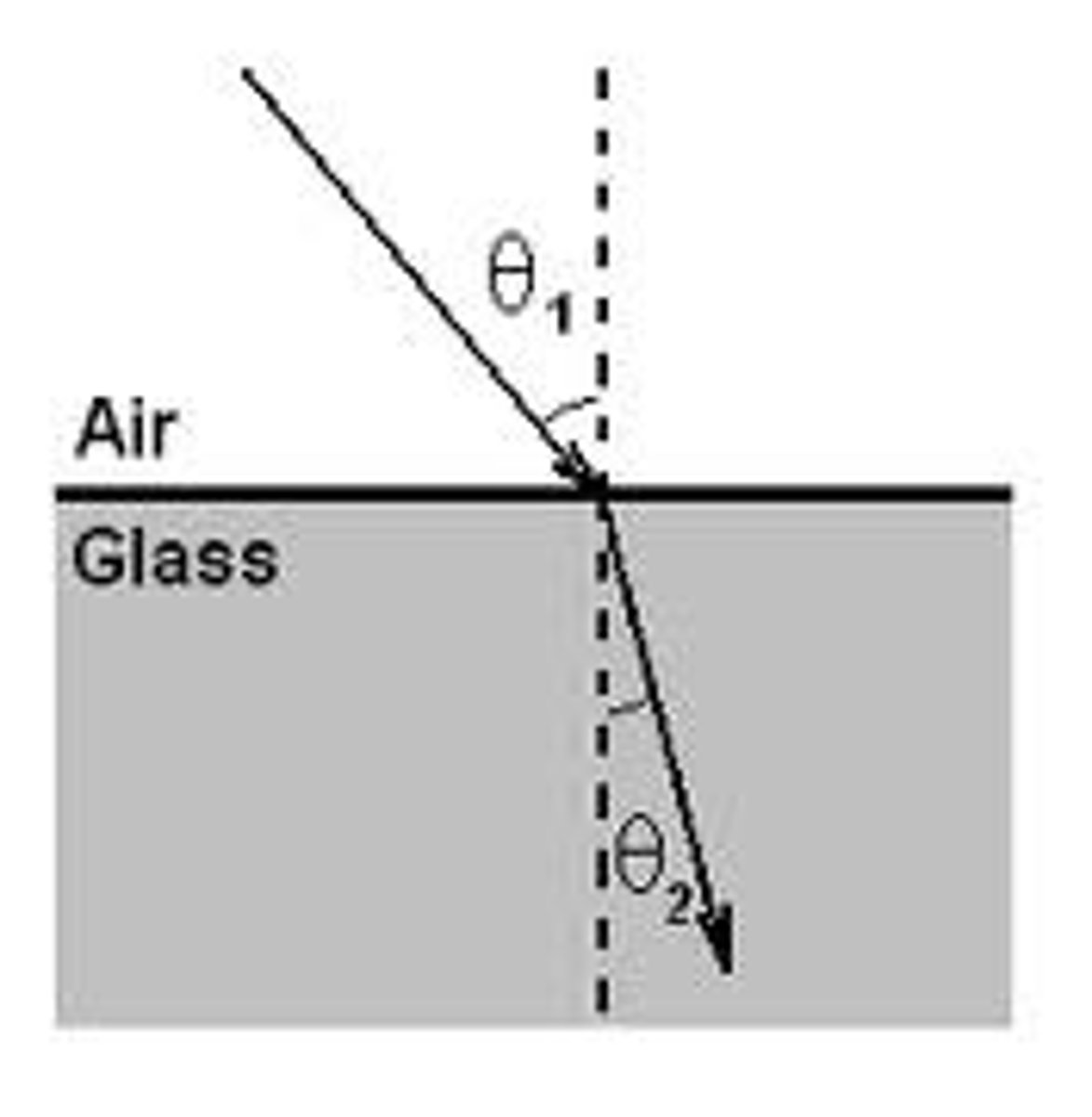
refractive index
a measure of the light-bending ability of a medium

what does not change when light passes into another medium?
frequency
if light is faster in medium 1...
it bends towards the normal line
if light is slower in medium 1...
it bends away from the normal
when light bends from a low-index medium to a high-index medium (e.g air to diamond)...
it bends towards the normal line (higher refractive power)
wave diagram refraction
(see image)

what changes when you enter a new medium?
speed, direction, wavelength (not frequency- anything that happens to a wave once it is created will not affect the frequency)
a wave of EMR travels from air to water. will the wave's velocity increase or decrease?
decrease! the denser medium slows down the wave
total internal reflection
the angle of incidence becomes so great that the EMR cannot escape the substance the incident is in
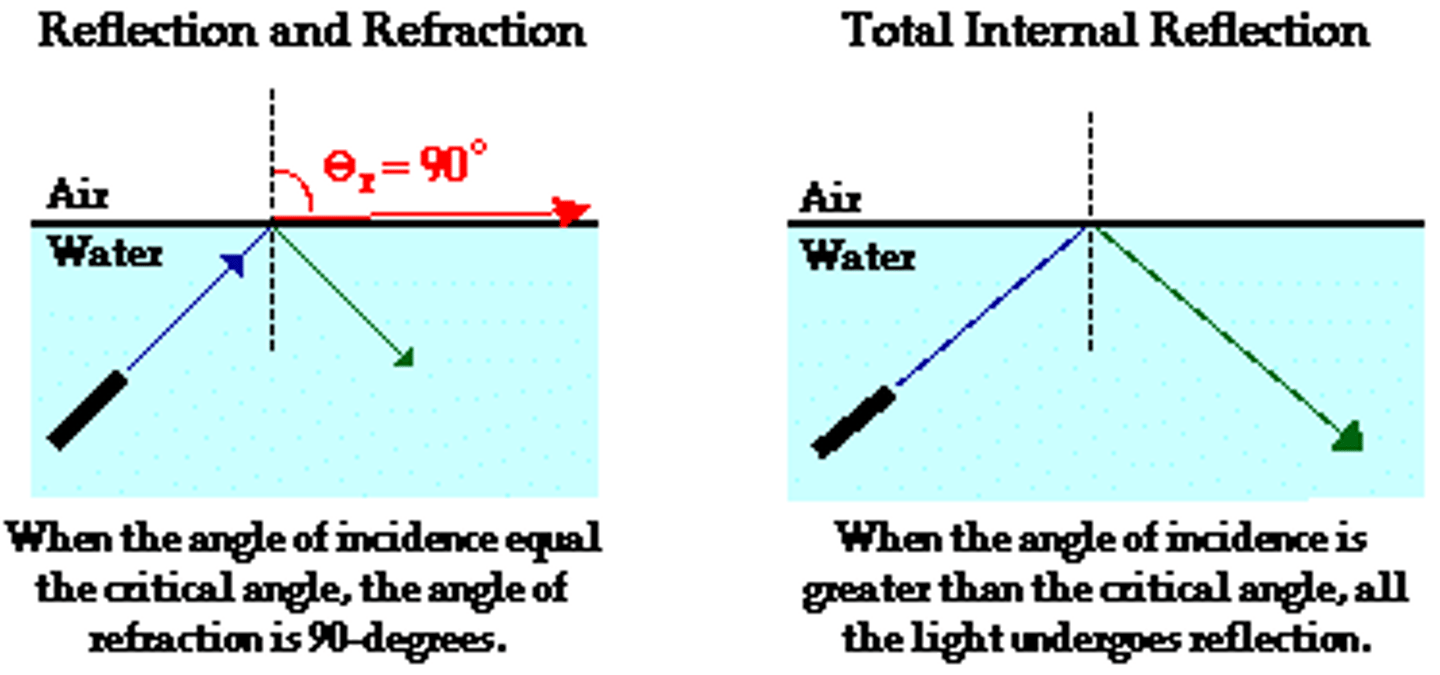
white light
contains all wavelengths of the visible spectrum at equal intensity
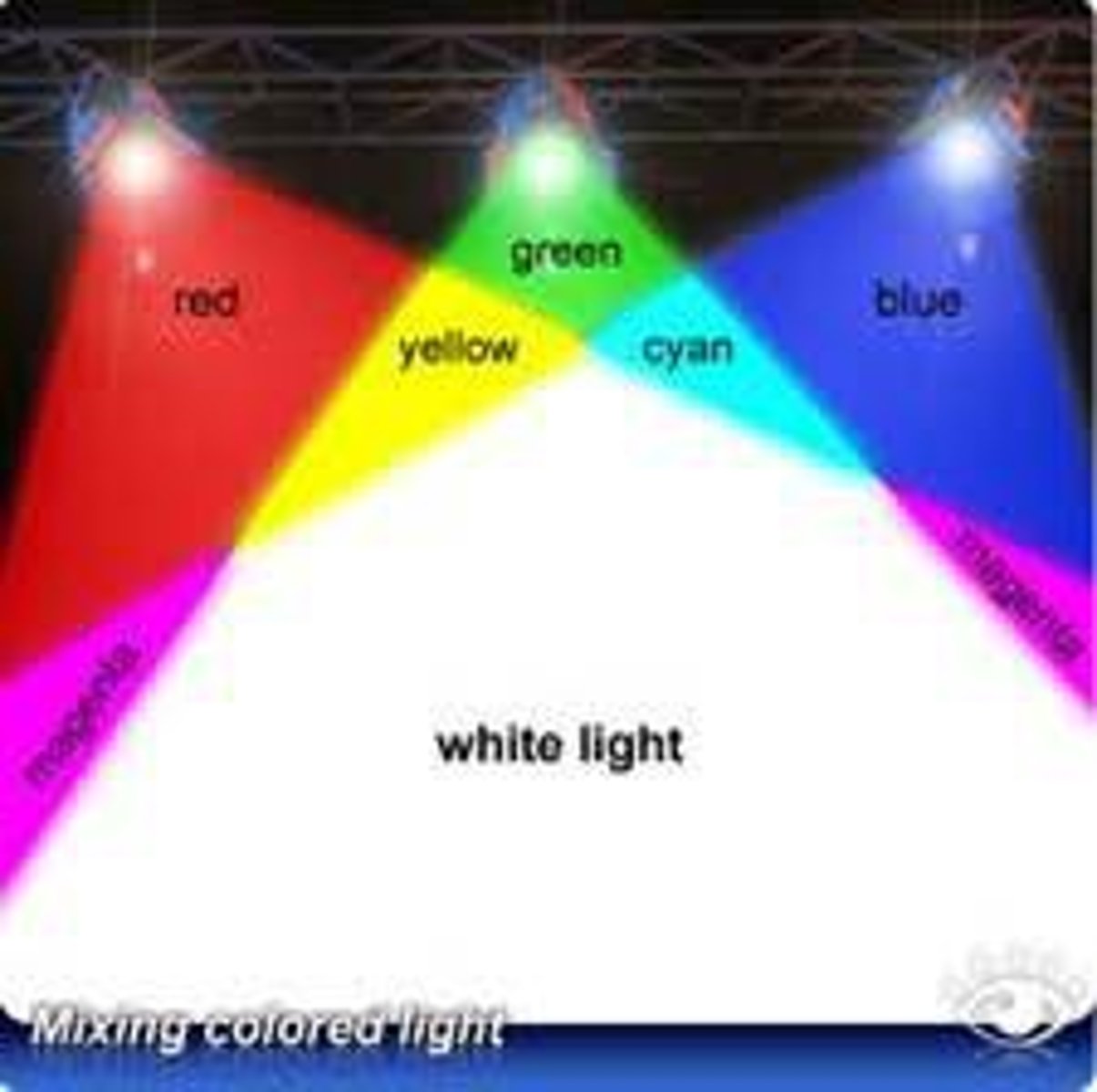
spectrum
the bands of colours making up white light
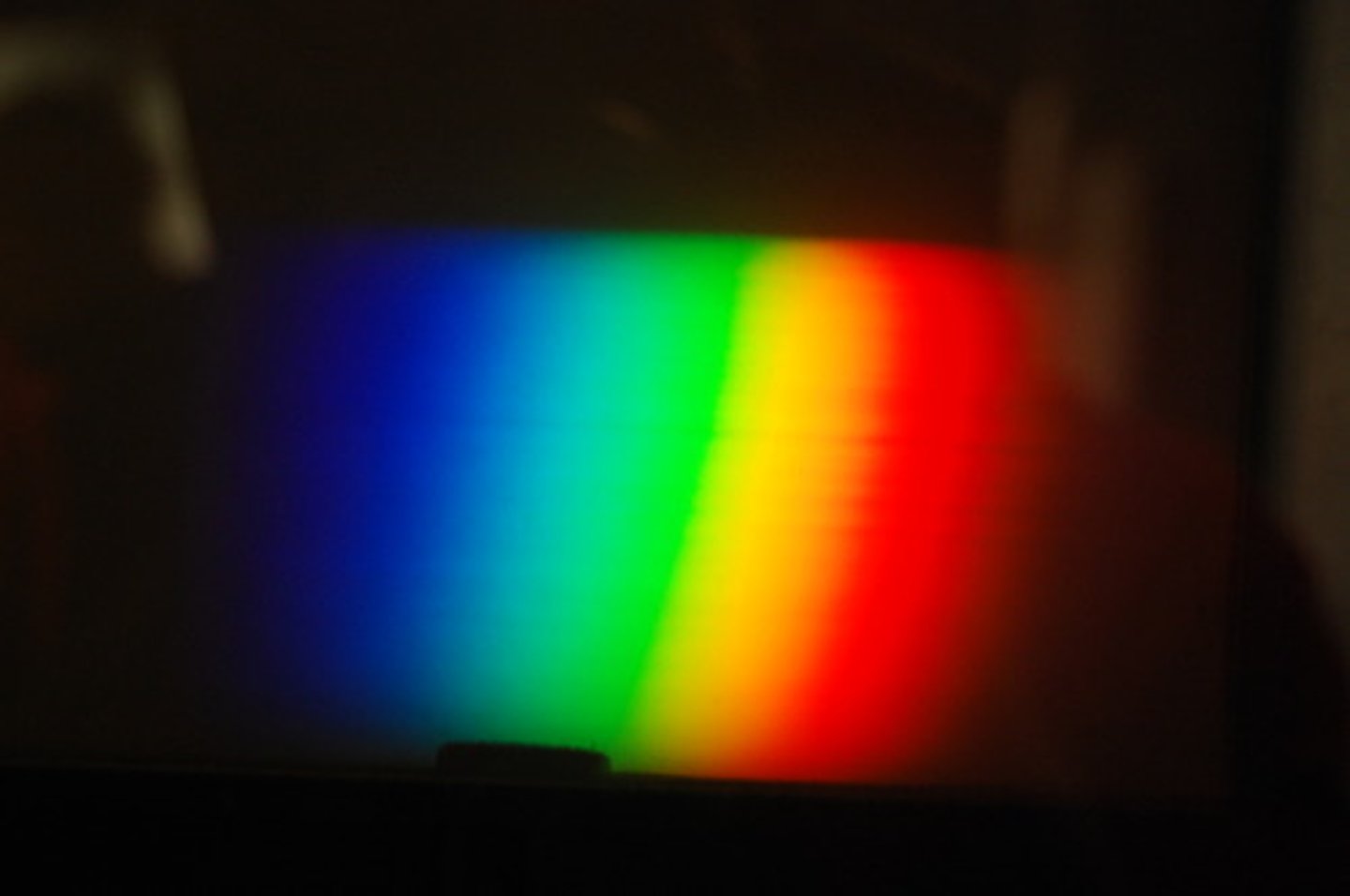
dispersion
The separation of light into its component wavelengths
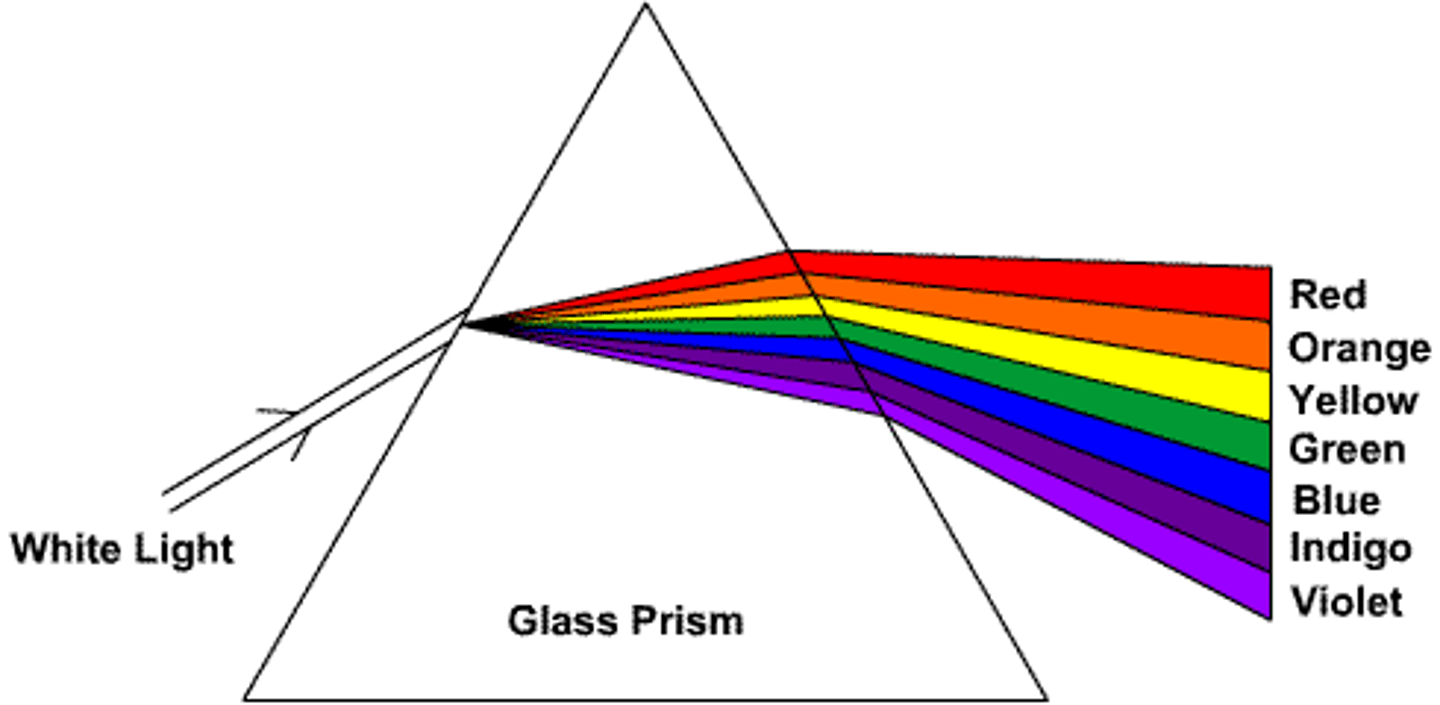
How does a prism split white light into different colors?
a prism has a high refractive index. incident light with a shorter wavelength (i.e violet) refracts the most. incident light with a longer wavelength refracts the least (i.e red). therefore the components of the light slow down relative to wavelength of different colours and separate
in thin lens...
real images are inverted and virtual images are erect
Diffraction
Occurs when a wave front encounters a small opening in a barrier. this causes the wave to change direction and bend around it

interference
the combination of two or more waves that results in a single wave
Huygen's Principle
a wavefront is made from tiny circular waves that ehn added together make up the wavefrontwave
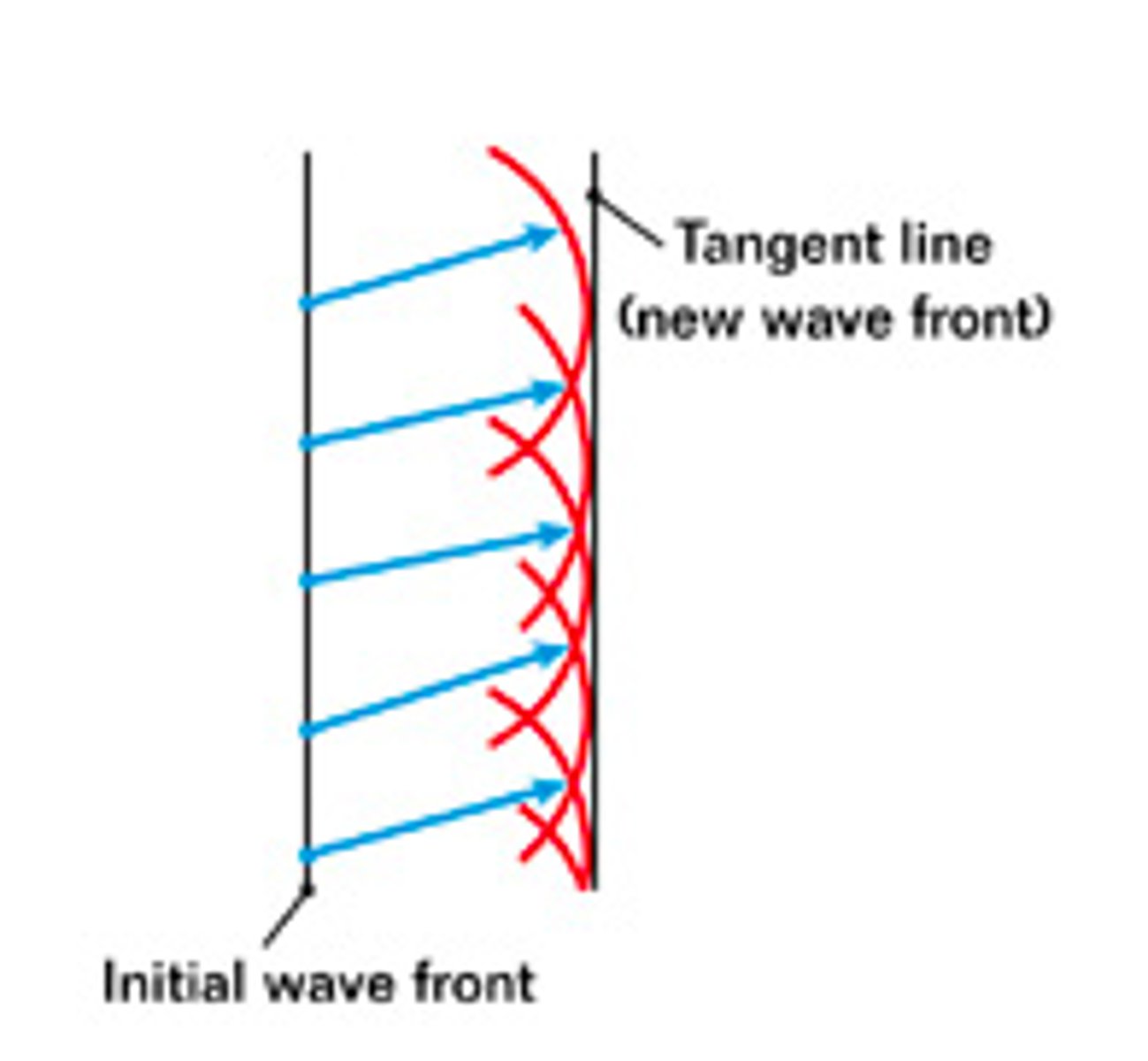
wave reflection
waves "bounce back" from an obstacle
Interference
the combination of two or more waves that results in a single wave
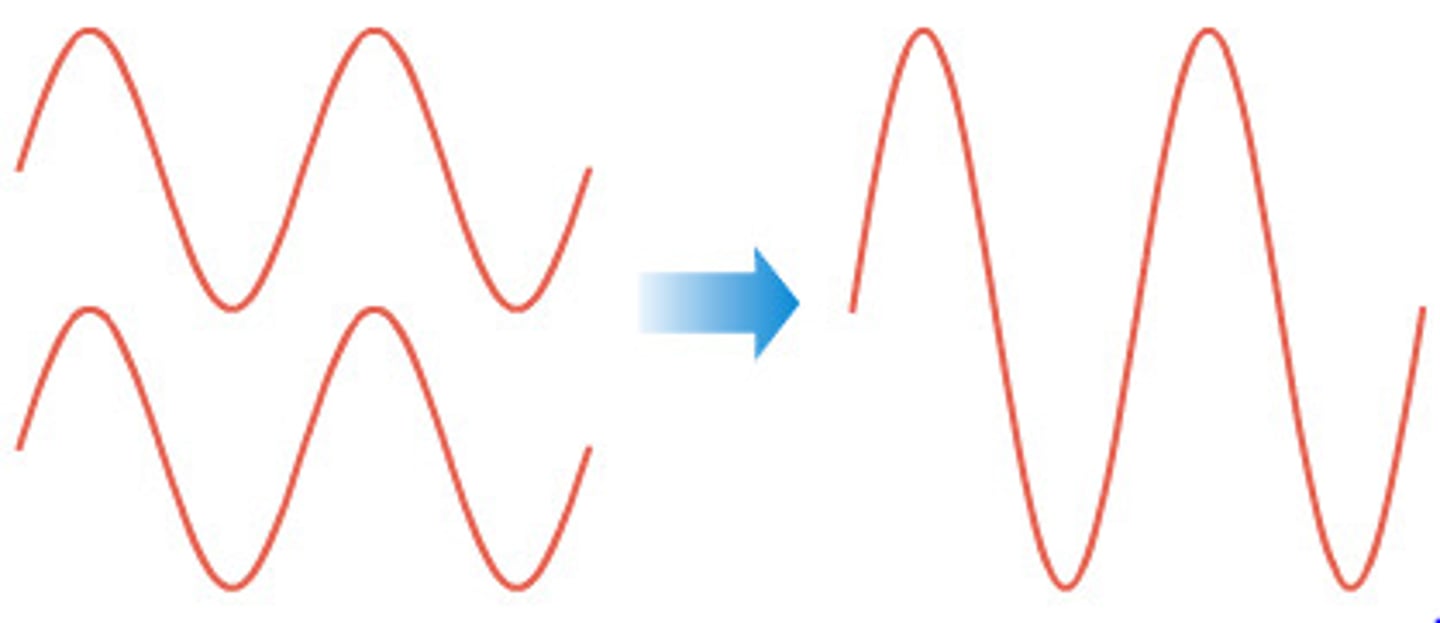
in phase
crests and troughs line up
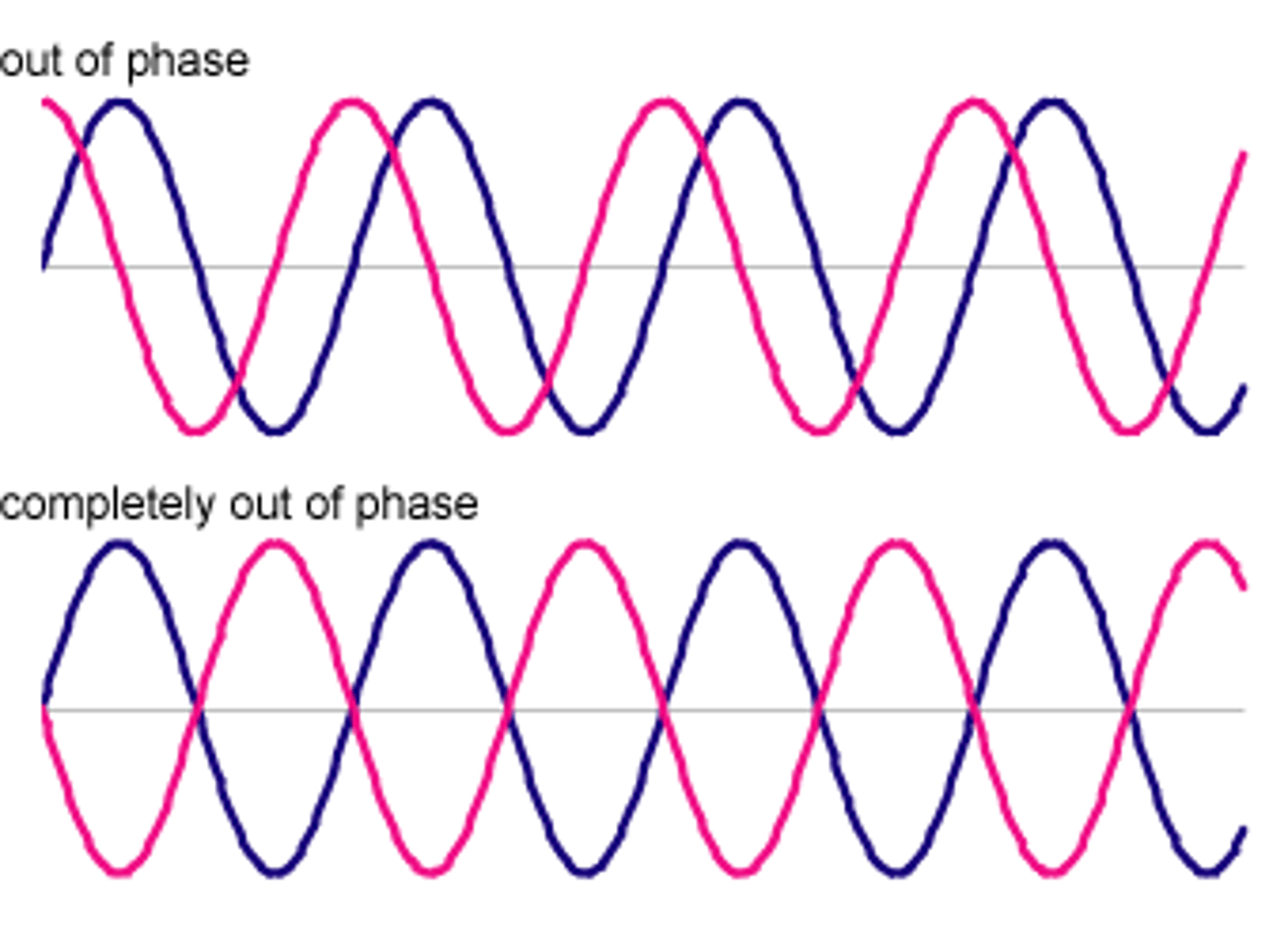
out of phase
crests and troughs don't line up
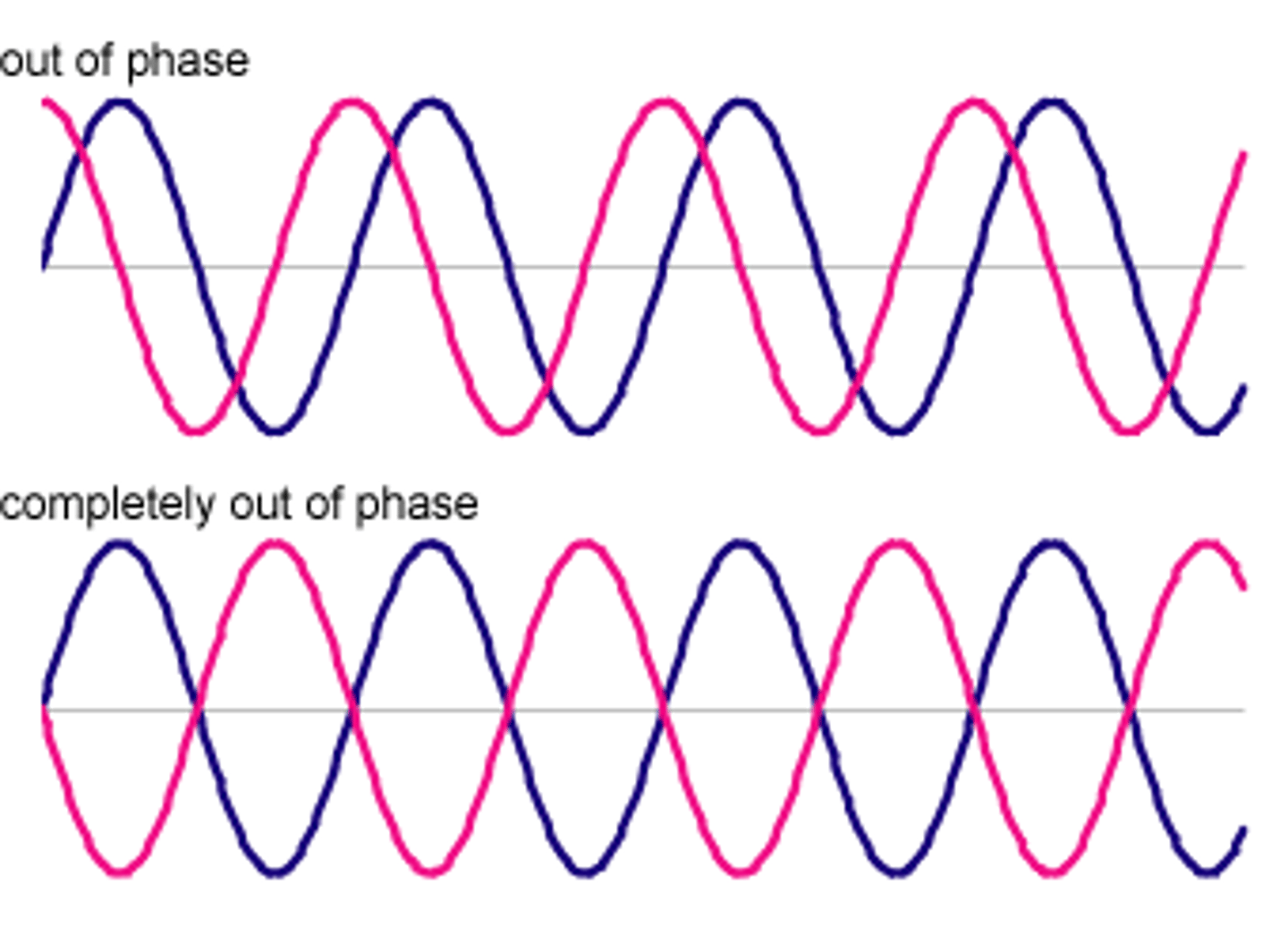
in-phase interference causes
constructive interference (wave gets bigger)

out-of-phase interference causes
destructive interference (wave gets smaller)
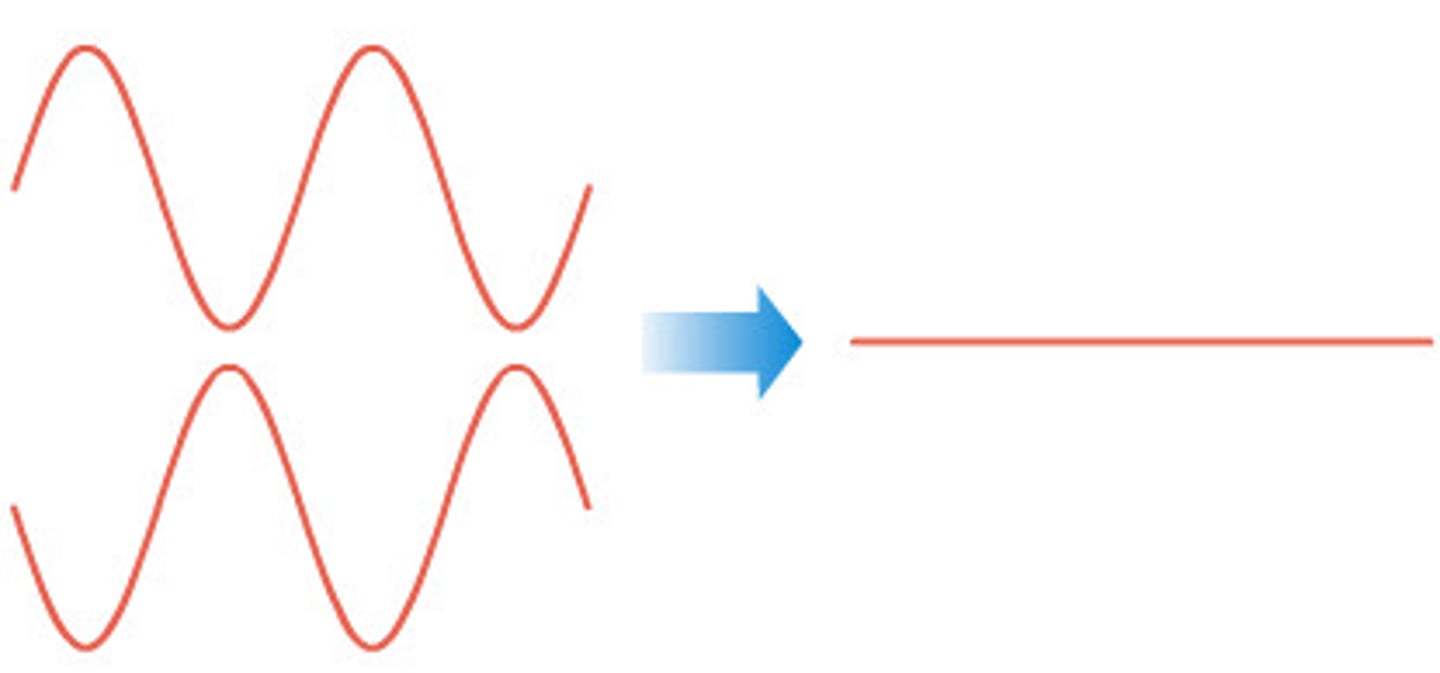
double slit experiment
bright fringes and dark fringes form (see diagram). the bright fringes are constructive interference and the dark fringes are deconstructive interference. therefore, light is interfering and diffracting (both properties of waves)
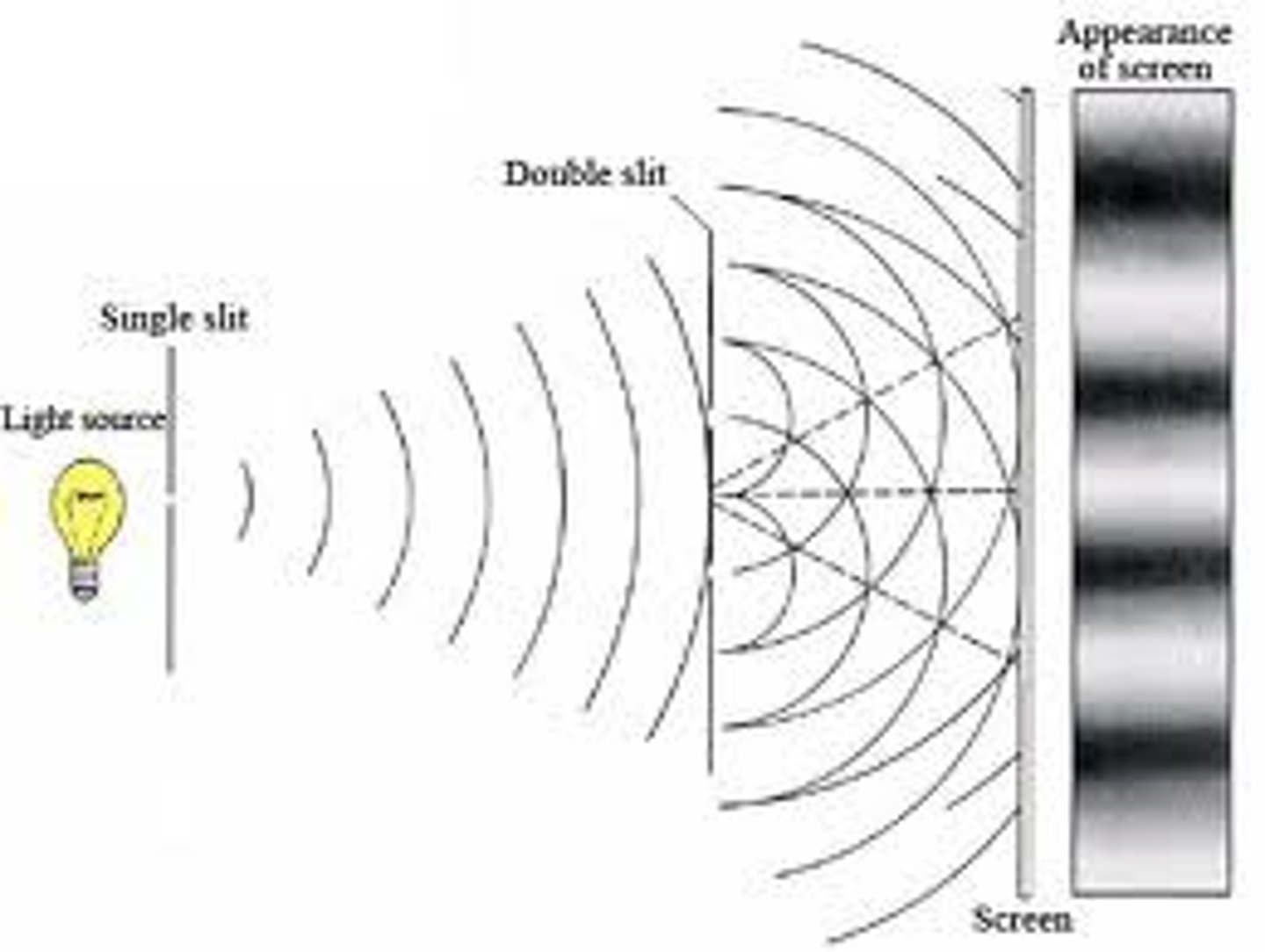
Poisson's Bright Spot
further supports the theory that light is a wave. bright or opaque disk displays bright dot in centre when exposed to light due to constructive interference
diffraction gratings
consist of multiple slits arranged in patterns. different numbers of slits change the number of fringes and their spacing
Use Huygens’ Principle to describe how interference can occur when a straight wavefront is incident on two narrow openings
Each opening acts as a point source (wavelet) and a circular wave front appears. These wavelets are in phase with the wave front and therefore interference occurs
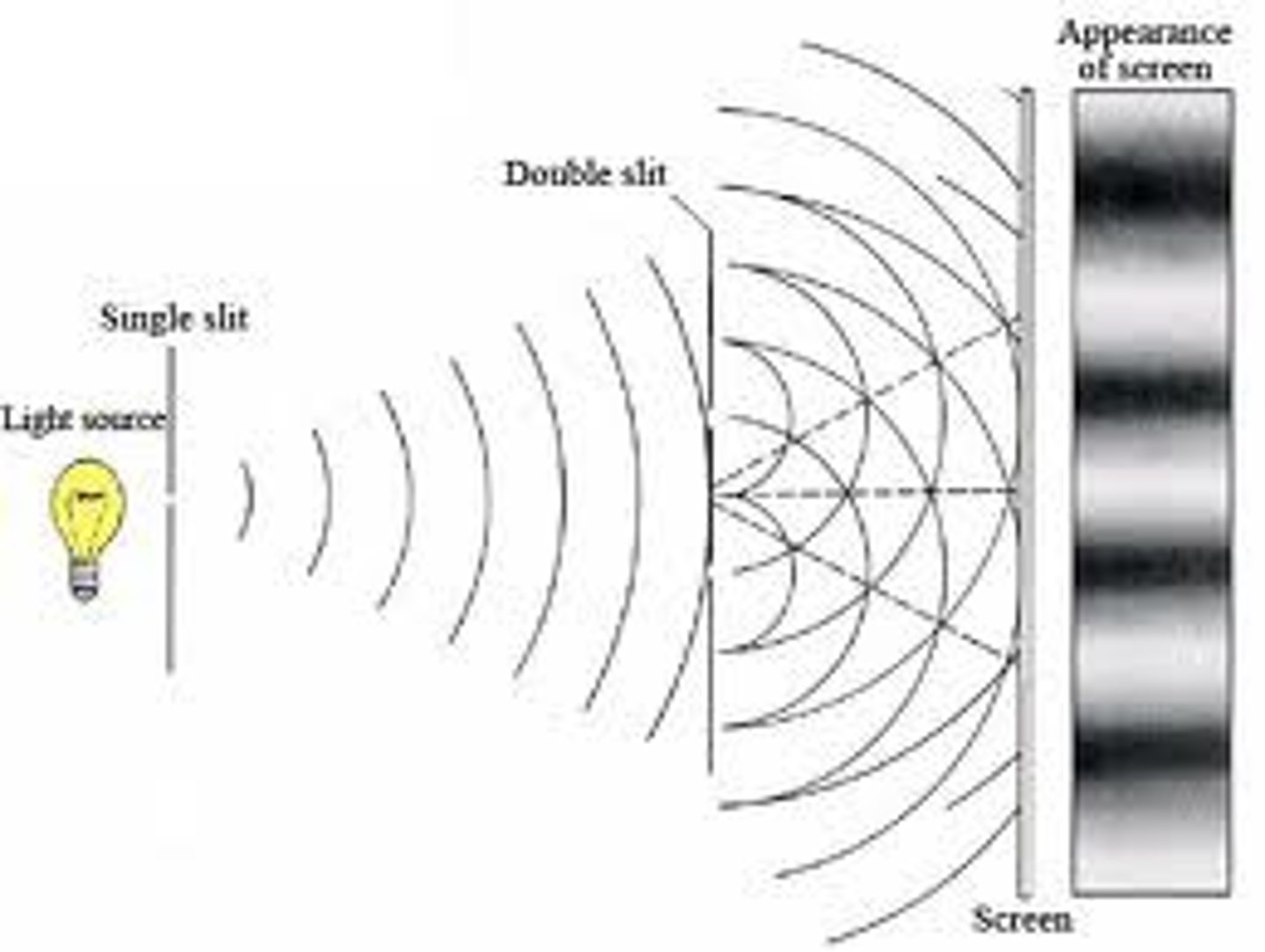
Two incandescent white lights are placed close to one another. Explain why an interference pattern is not observed on a nearby screen
1. These white light emit light in random bursts. this is out of phase with one another 2. White light contains all colours of the spectrum. Both of these mean the light is out of phase and will not produce constructuve (aka observable) interference
transverse wave
particle motion perpendicular to wave propagation

longtitudinal wave
particle motion is parallel to direction of wave (slinky!)
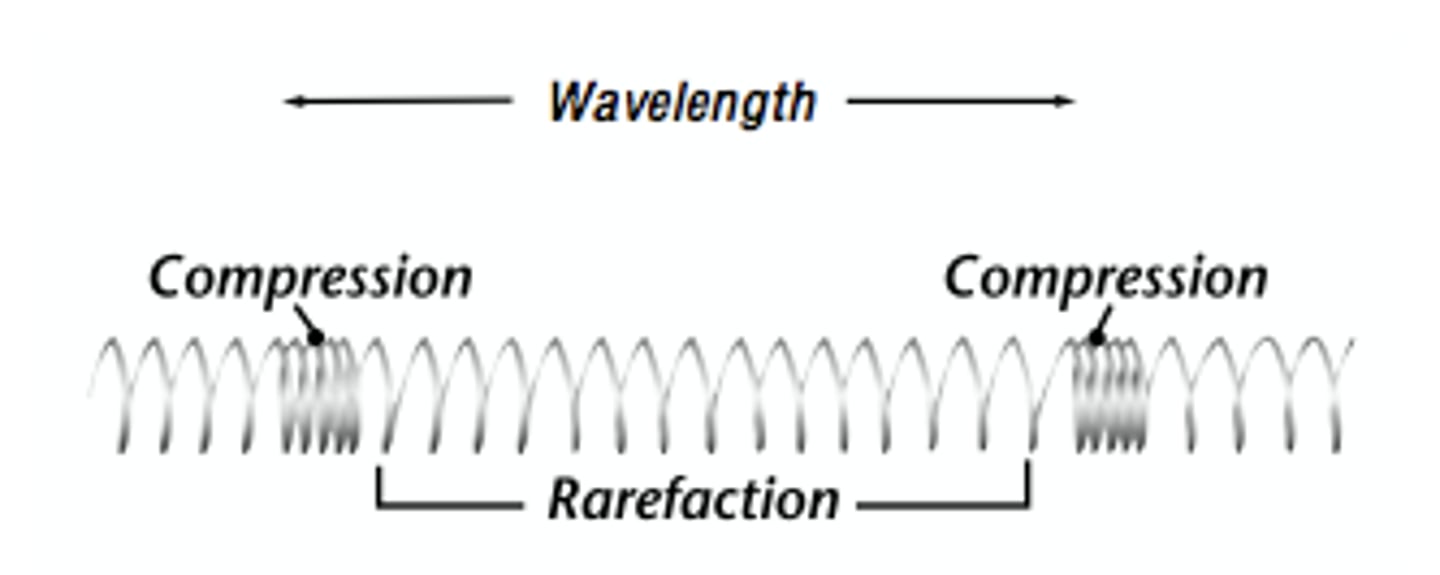
polarized light
light waves where vibrations are in a single plane. polarized light filters take regular light and only allow one dimension to travel through it
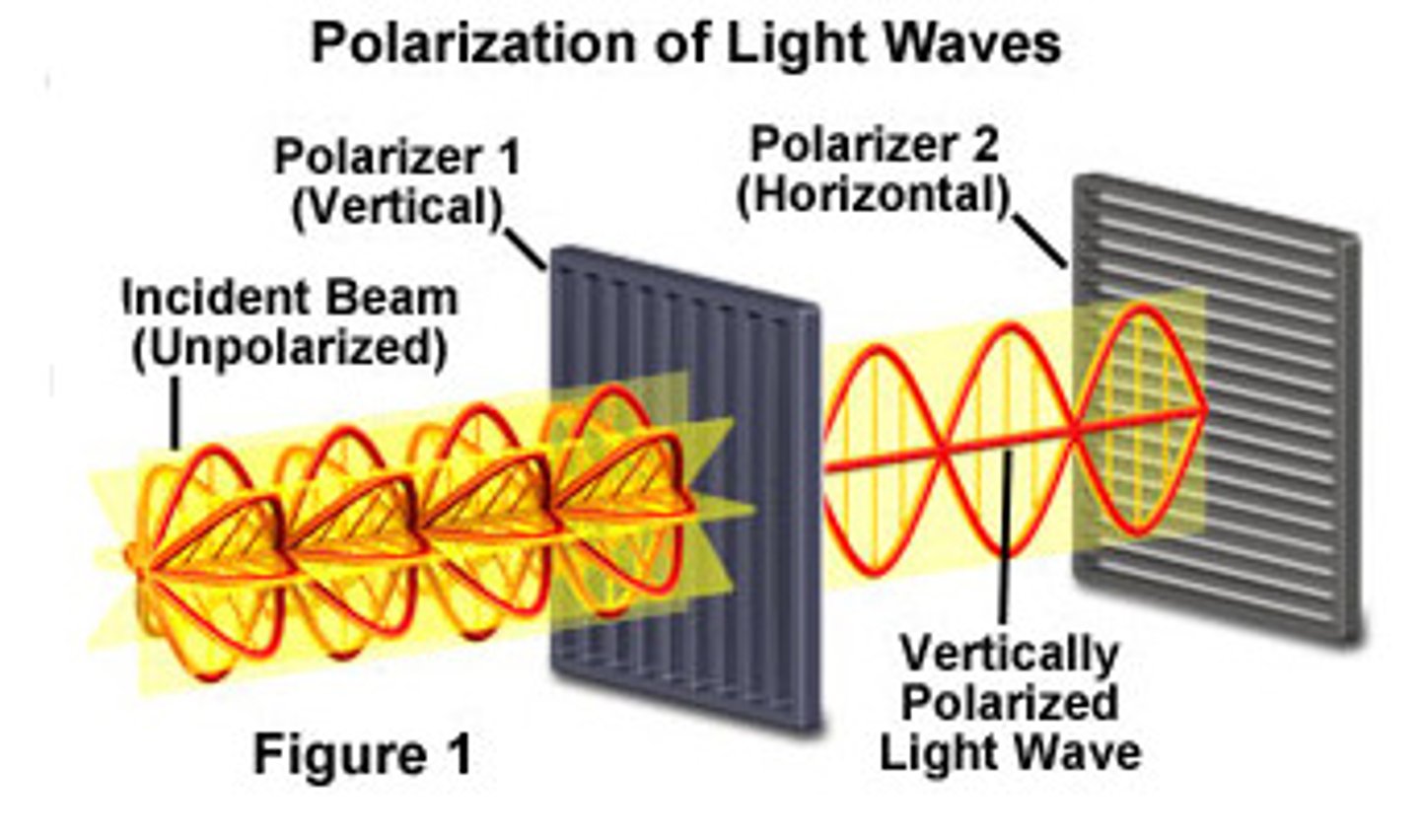
what does a polarizing filter prove about light
a longitudinal wave wouldn't be affected by a polarizing filter. therefore, light is transverse, as it is affected by a polarizing filter
Why is the sky blue?
The air molecules scatter blue light better than red light, so more blue light reaches our eyes.
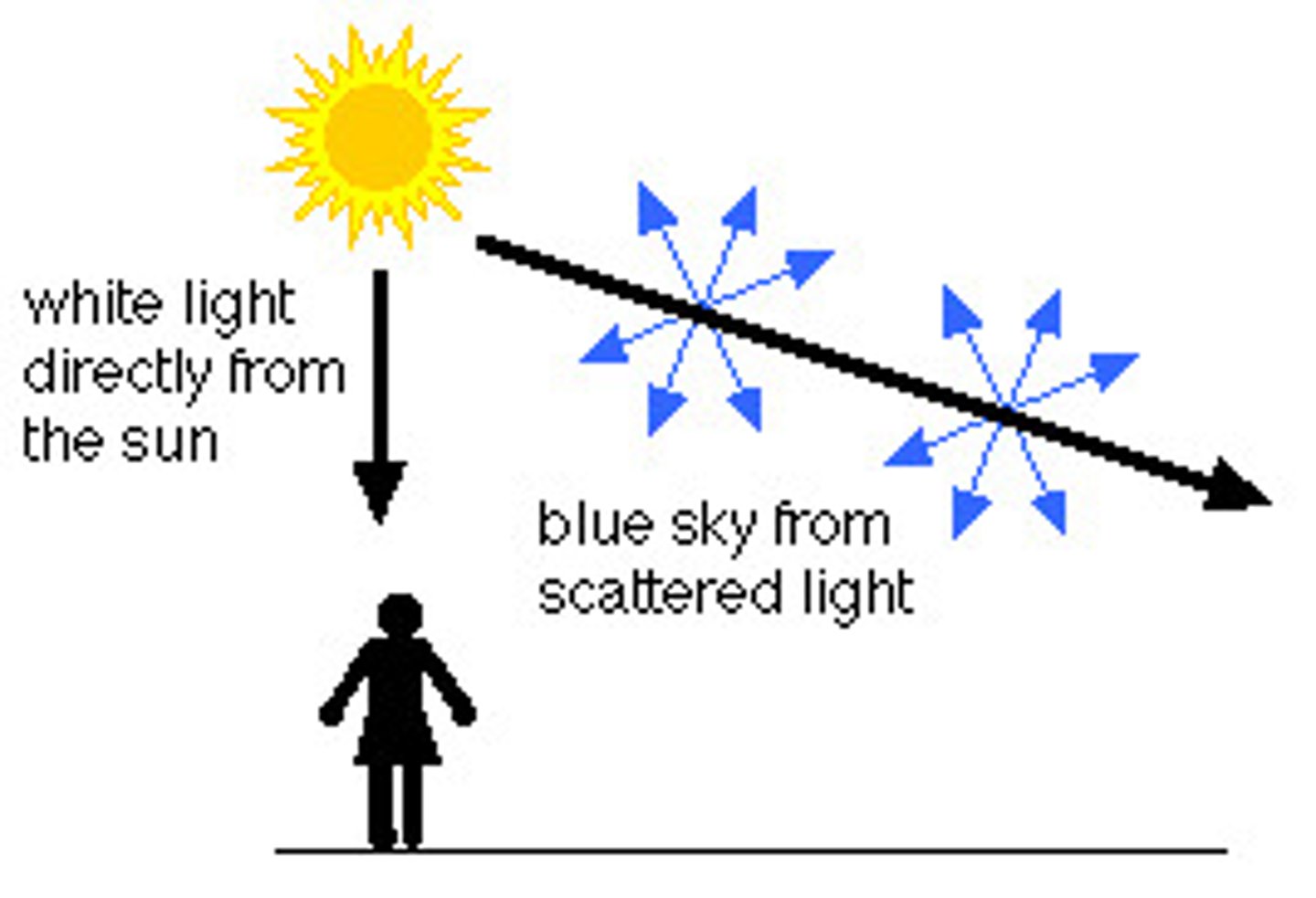
Relationship between temperature and colour
1. Hot, glowing objects emit a continuous range of wavelengths and hence a continuous spectrum of colours.
2. For a given temperature, the light emitted by the object has a range of characteristic wavelengths, which determine the object's colour when it glows
3. The hotter an object is, the bluer the light it emits. The cooler an object is, the redder its light is.
incandescent
glowing with hert
black body spectrum
a graph of this shows the relationship between temperature and wavelengths. the peak on the graph shows the predominant colour.
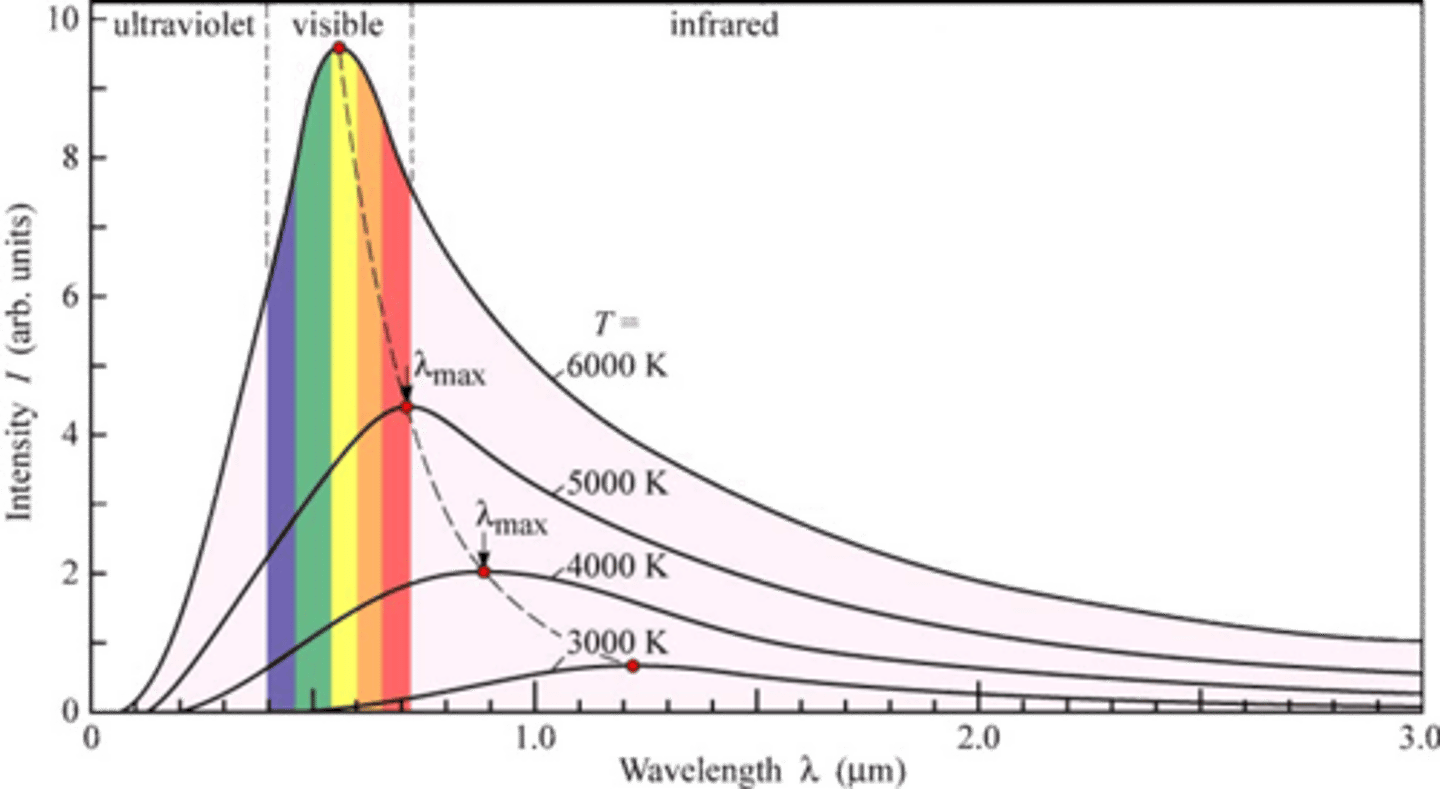
black body radiation
Radiation emitted by a heated object
black bodies
perfect absorbers and emitters of radiation. when heat they perfectly radiate all wavelengths
maxwell's prediction of temperature and frequency
as long as the temperature of an object increases, the frequency of the e/m radiation should continue to increase (this is incorrect due to the UV catasrophe!)
UV catastrophe
according to classical physics (aka maxwell's predictions etc.) a hot object would emit its energy most effectively at short wavelengths, and the shorter the wavelength, the more energy that would be emitted. This means a match would emit some radiation in infrared, then most in visible/UV and a lot in the X RAY region. this would incinerate the entire universe